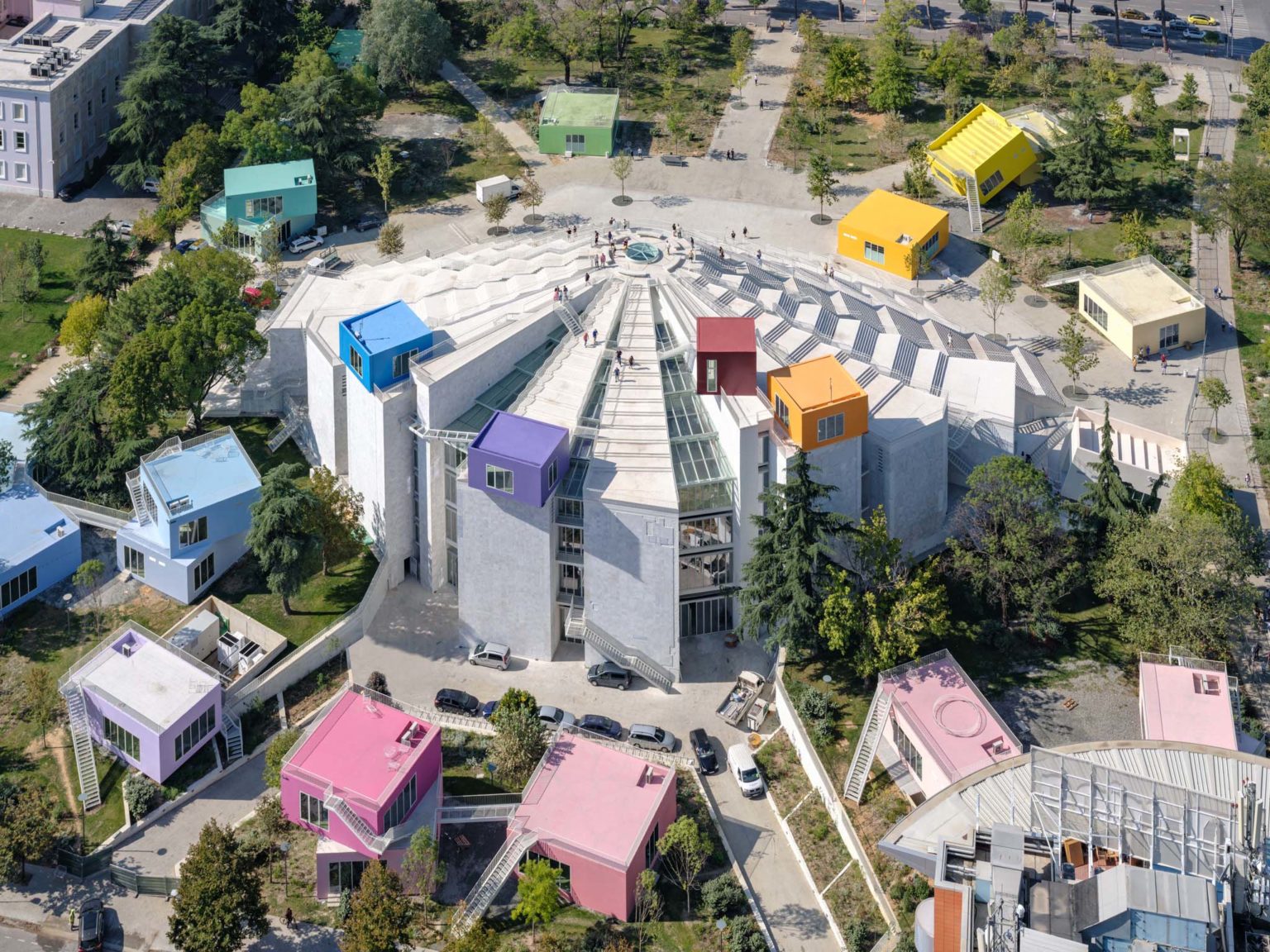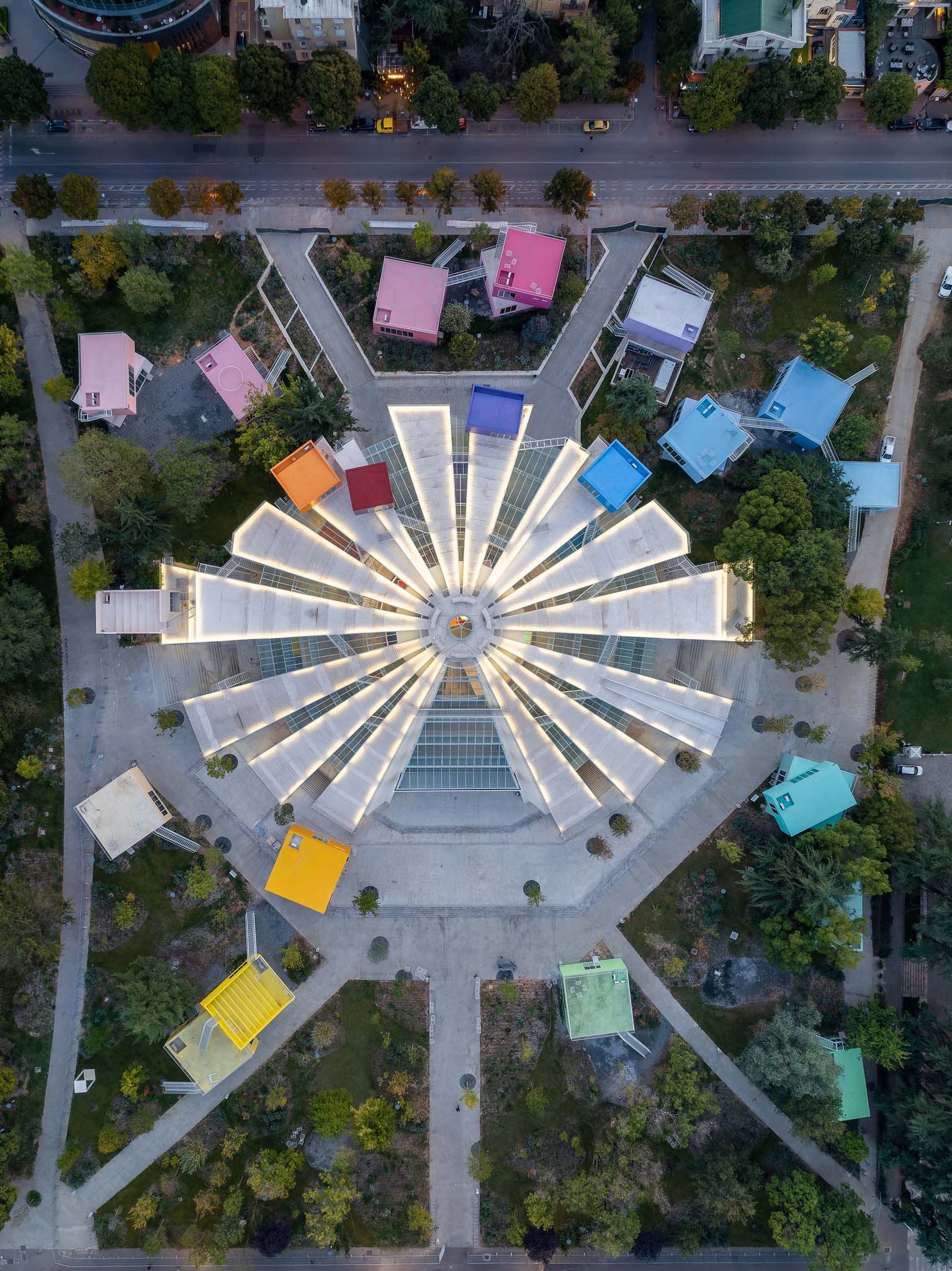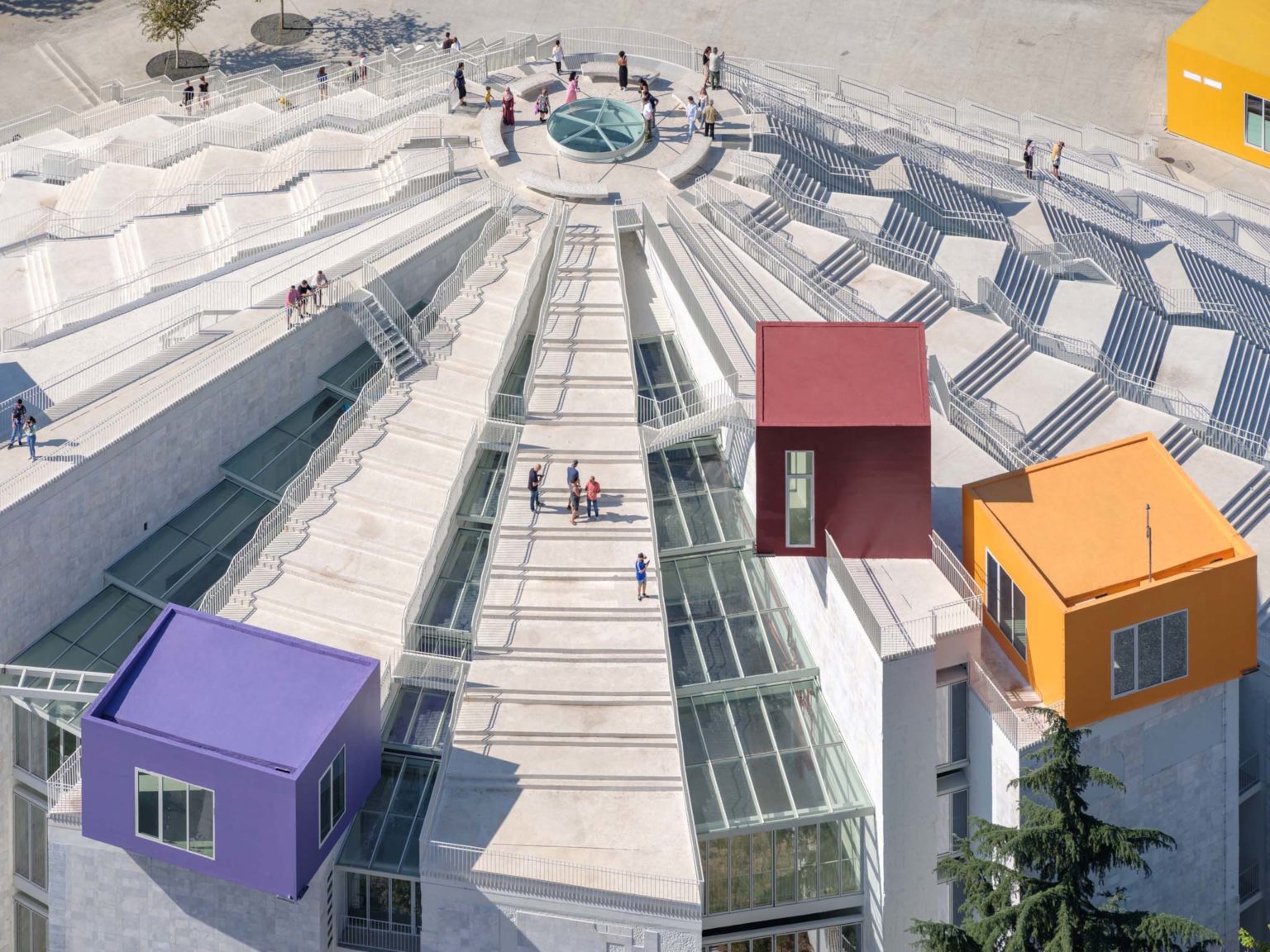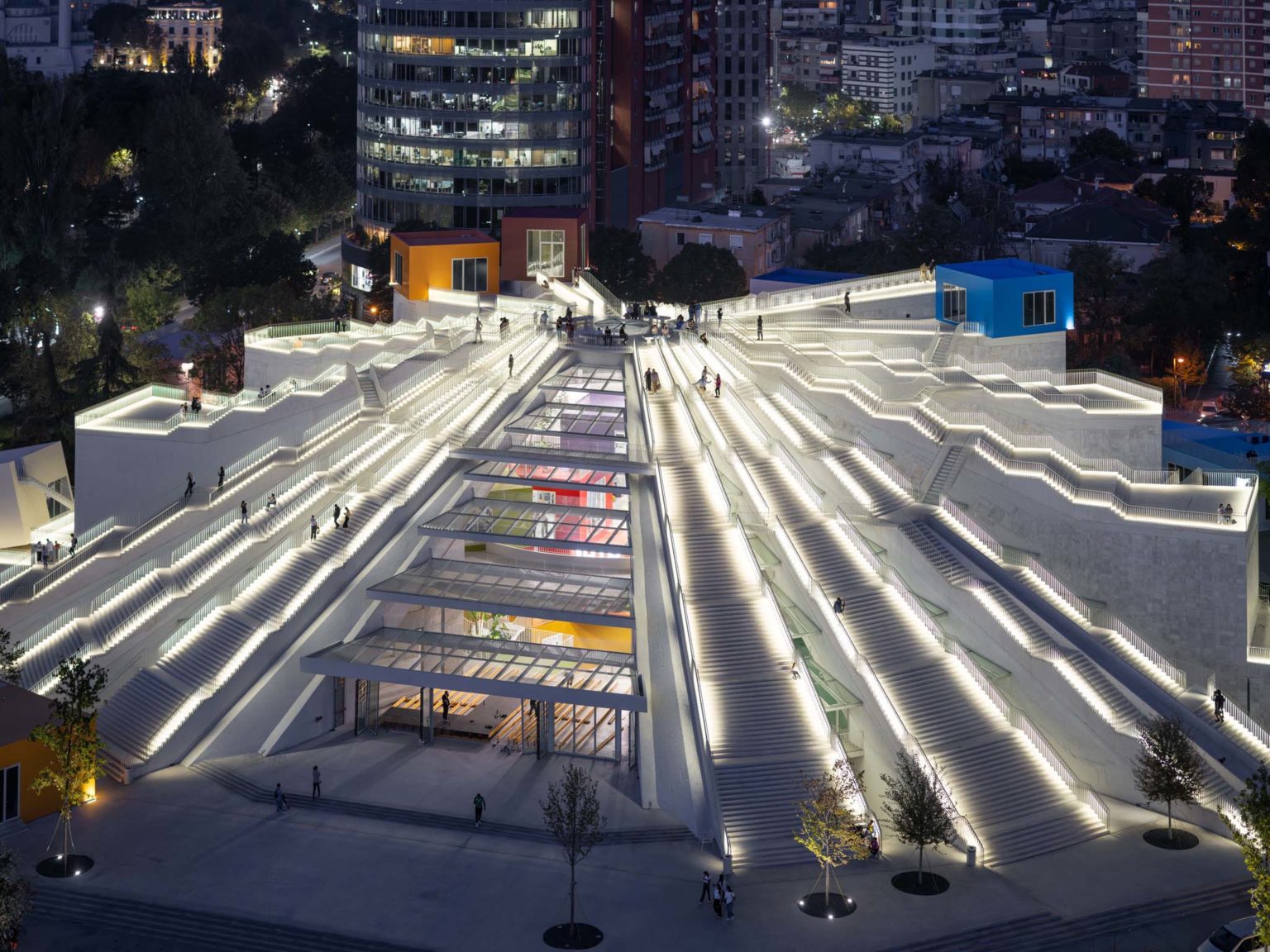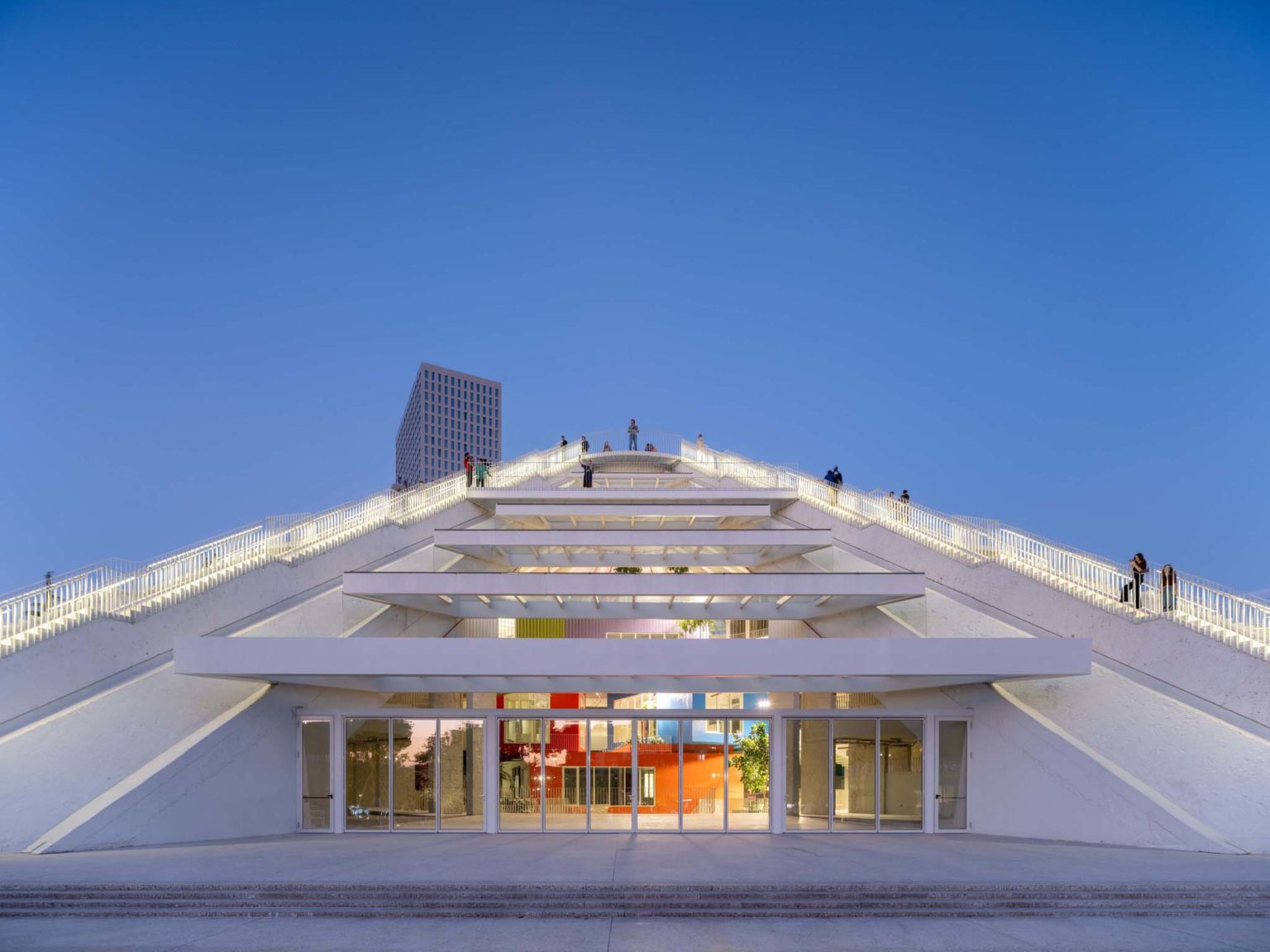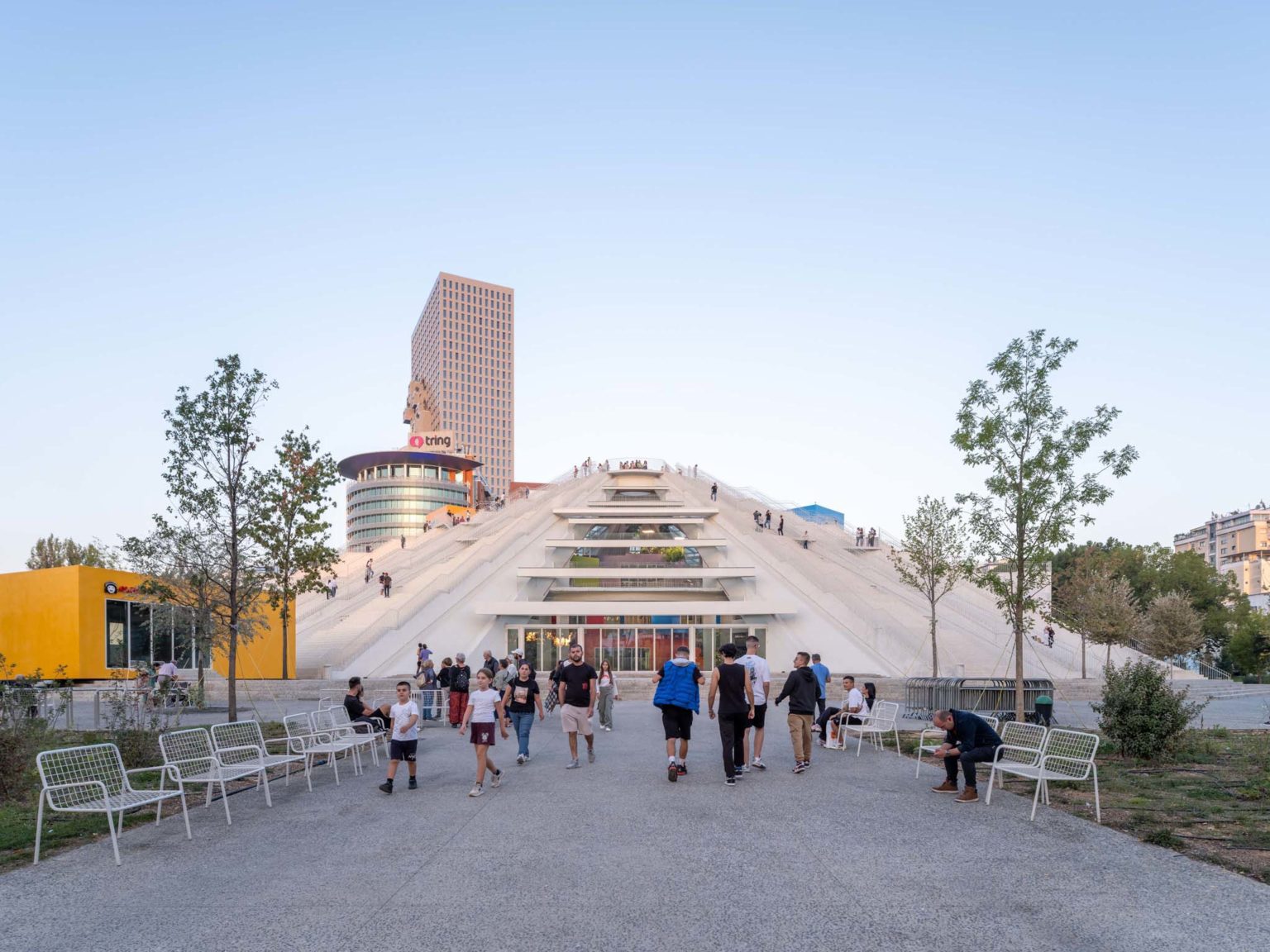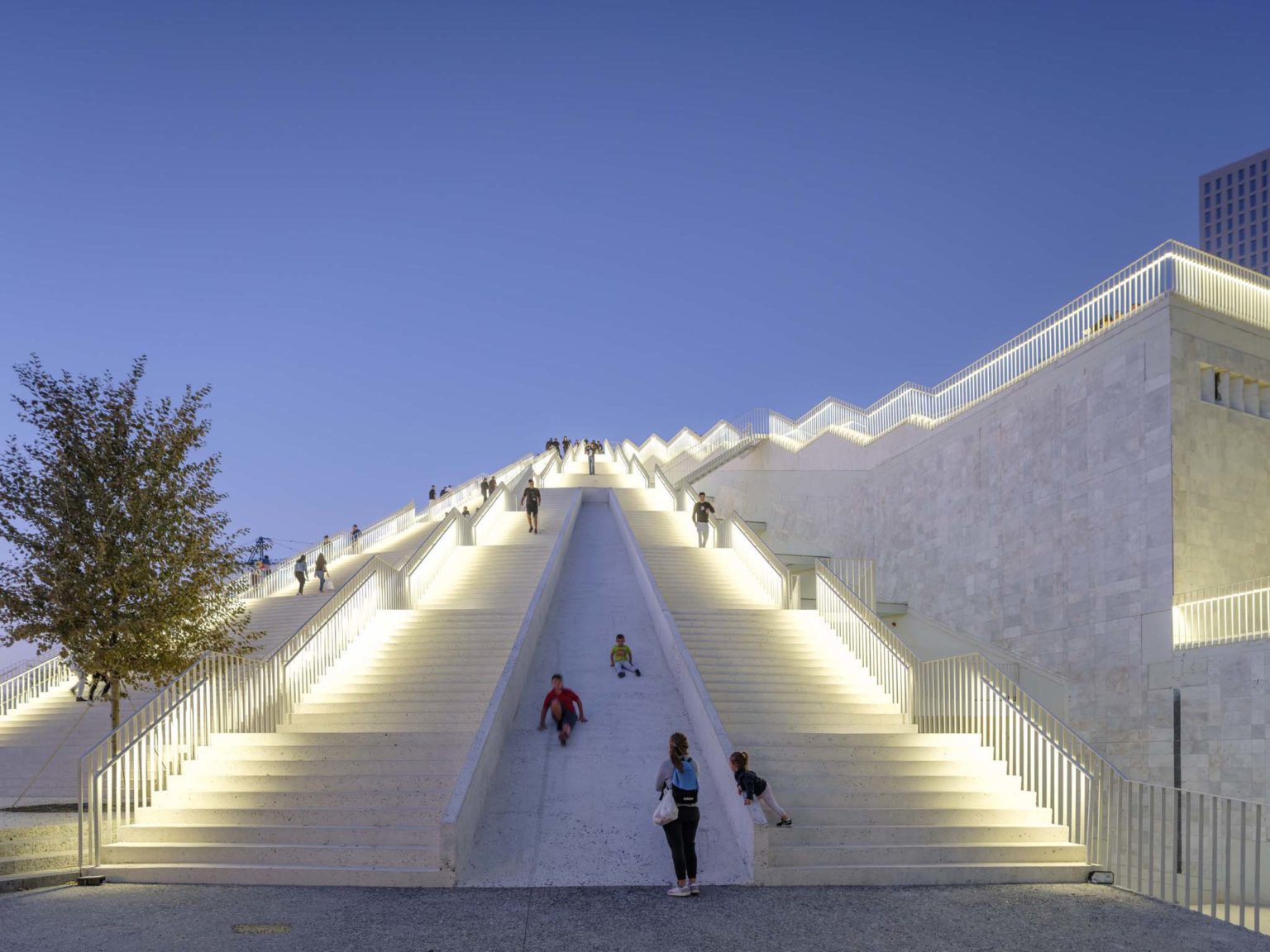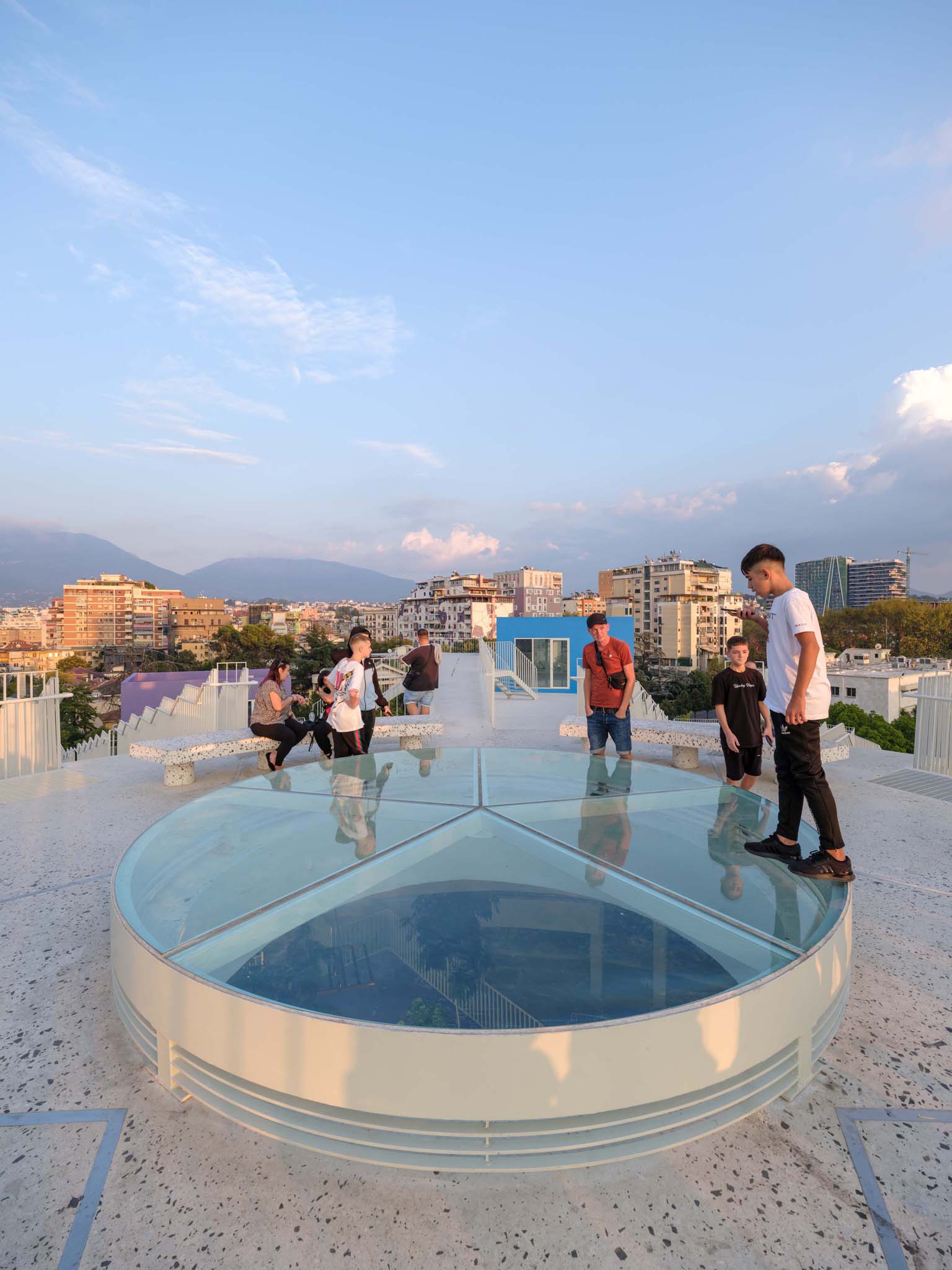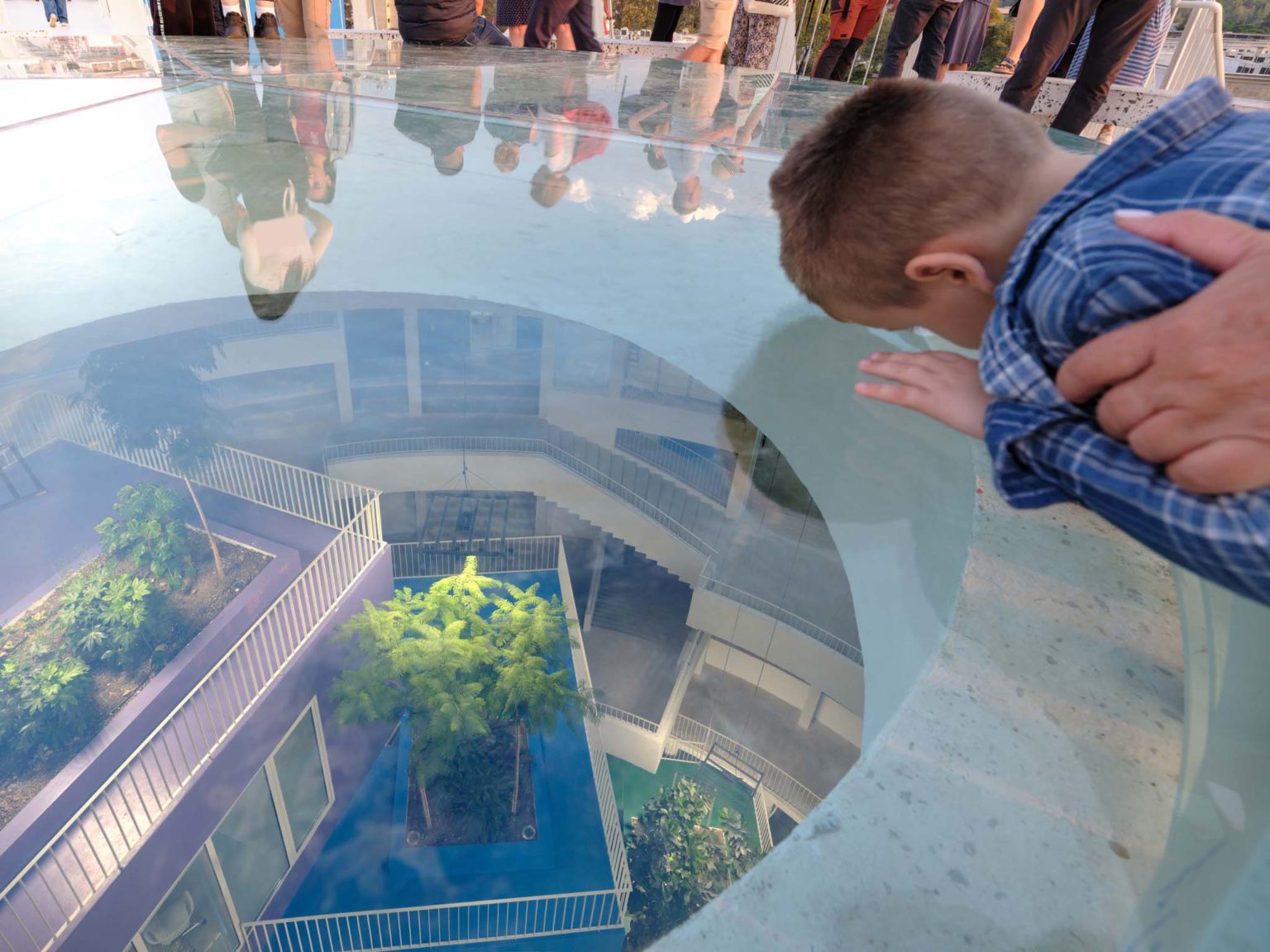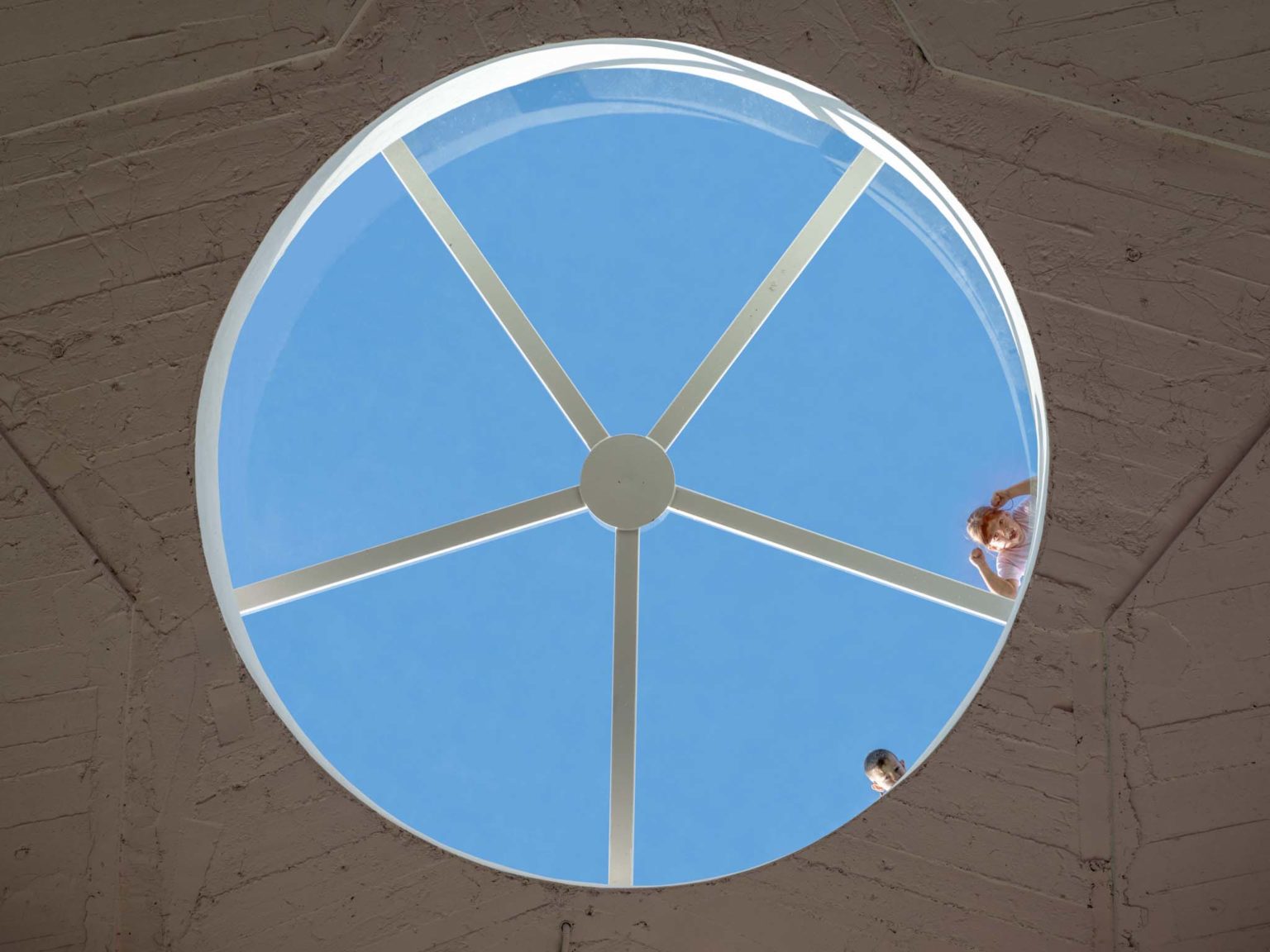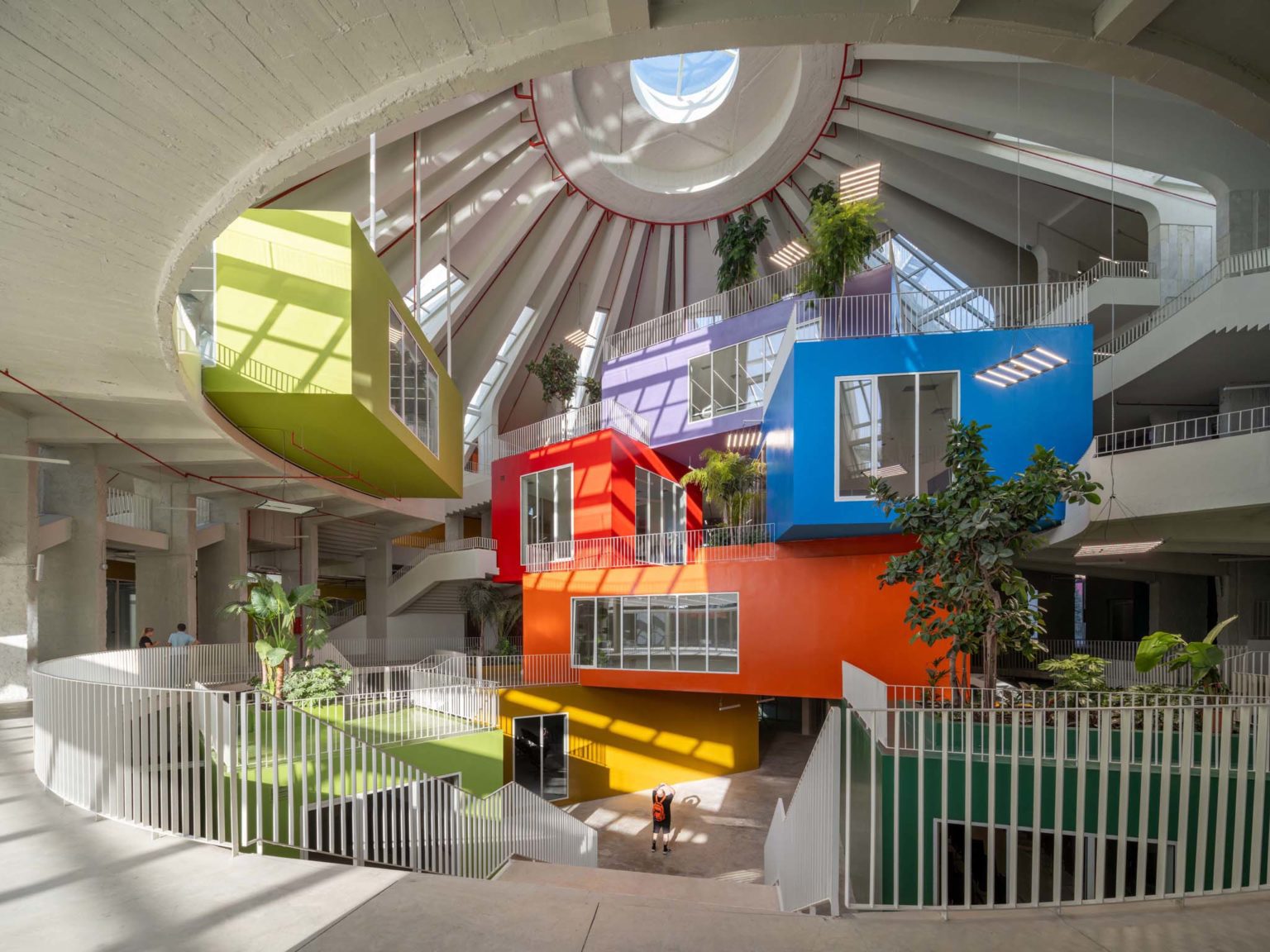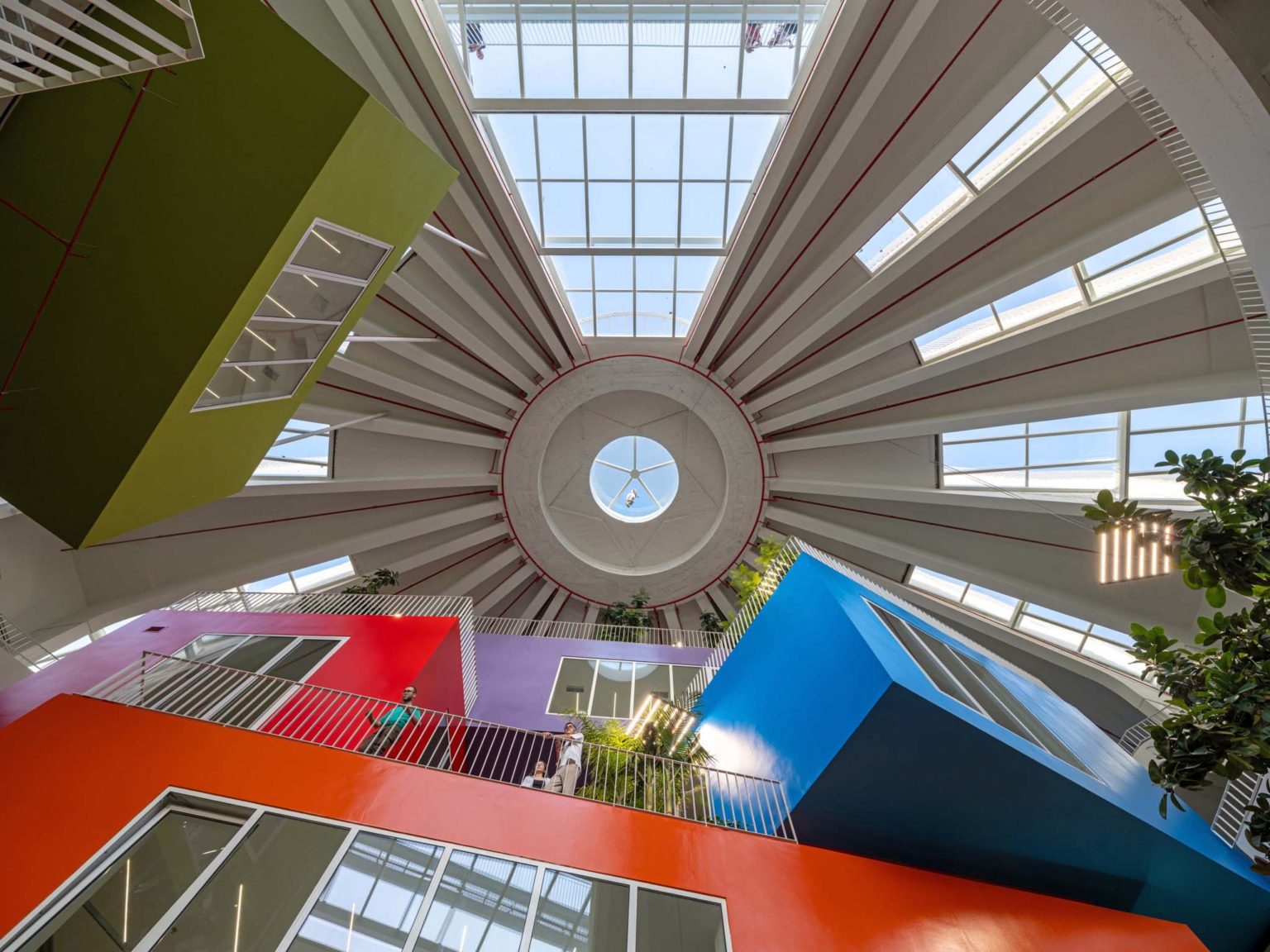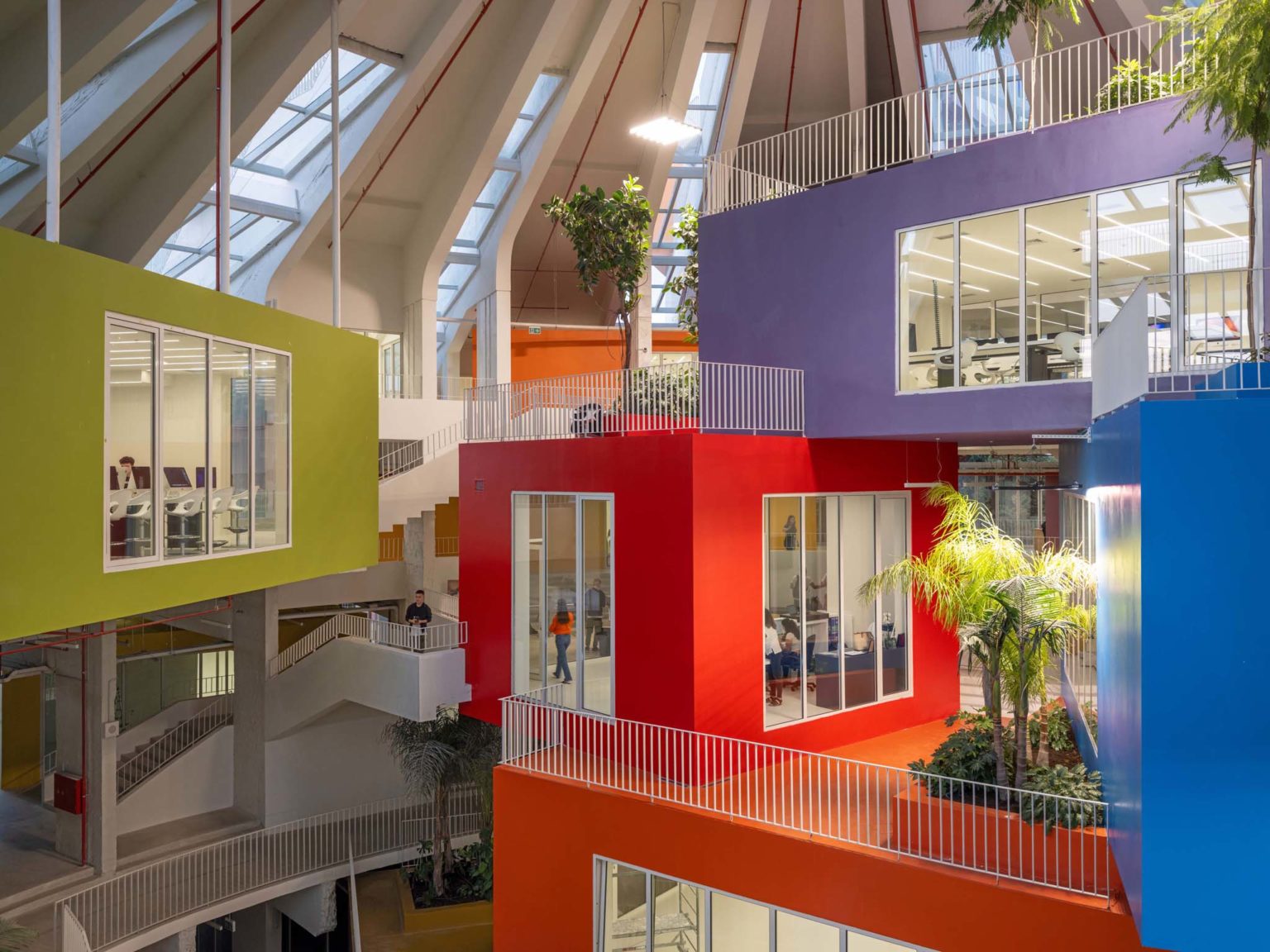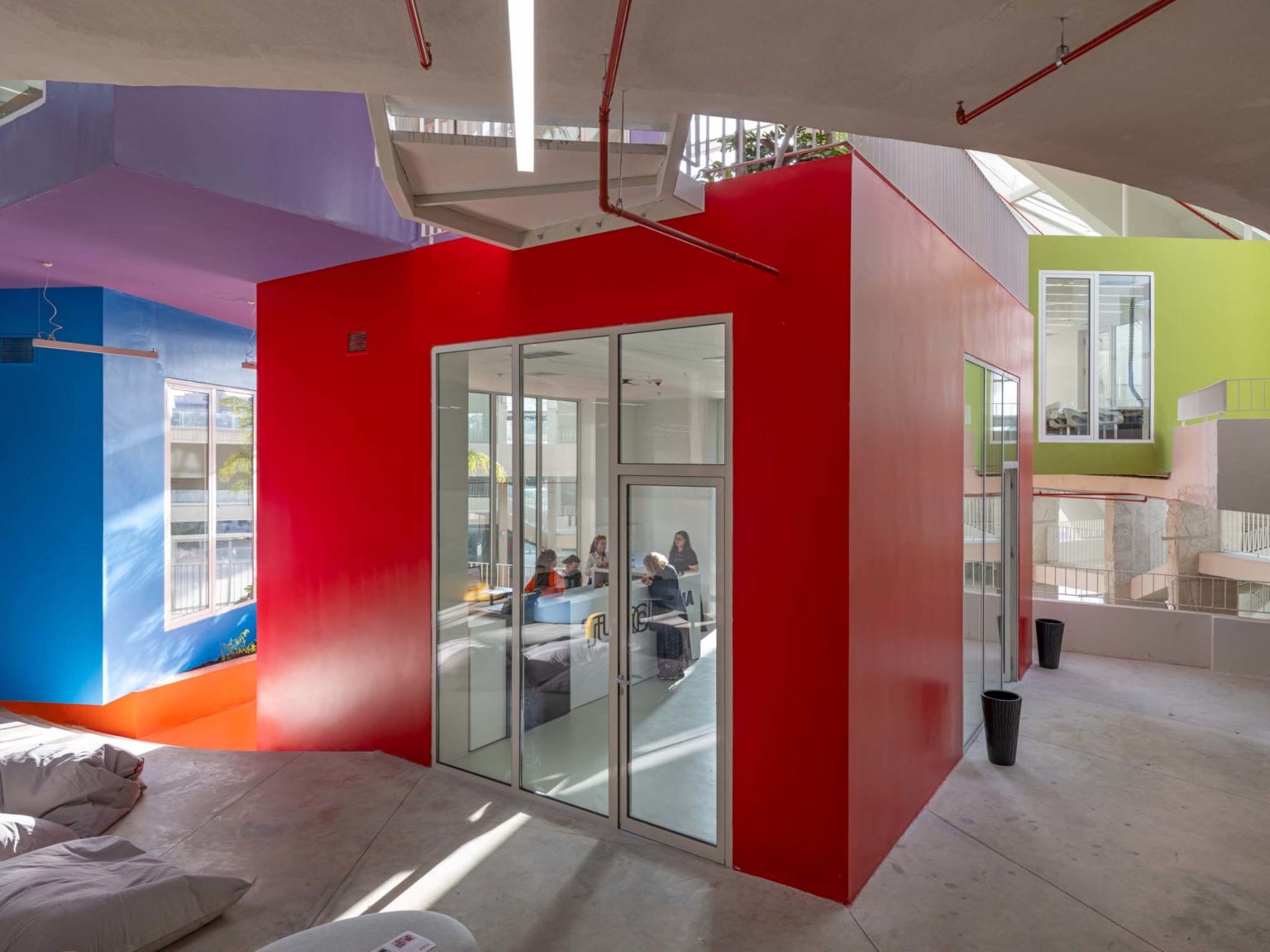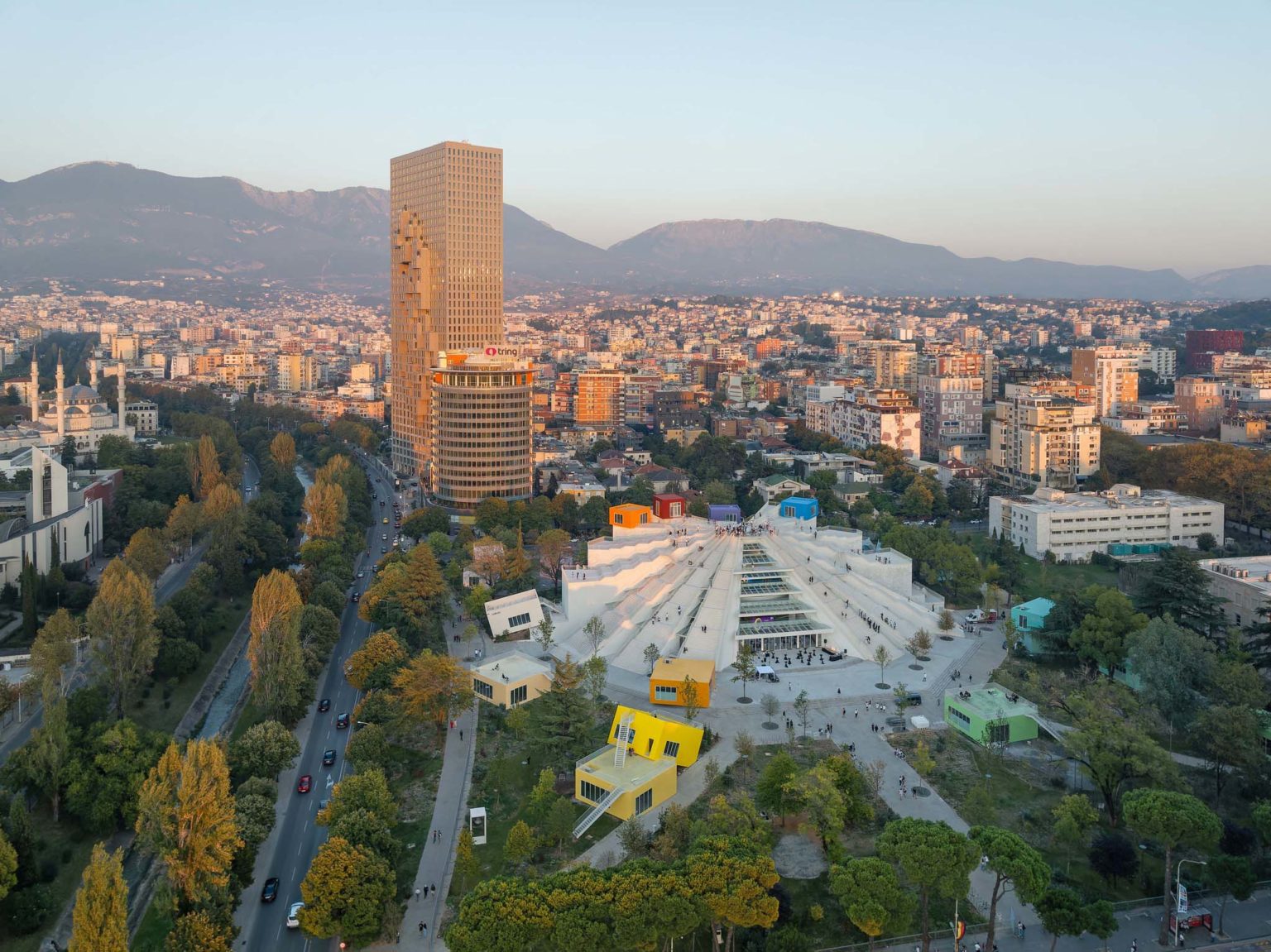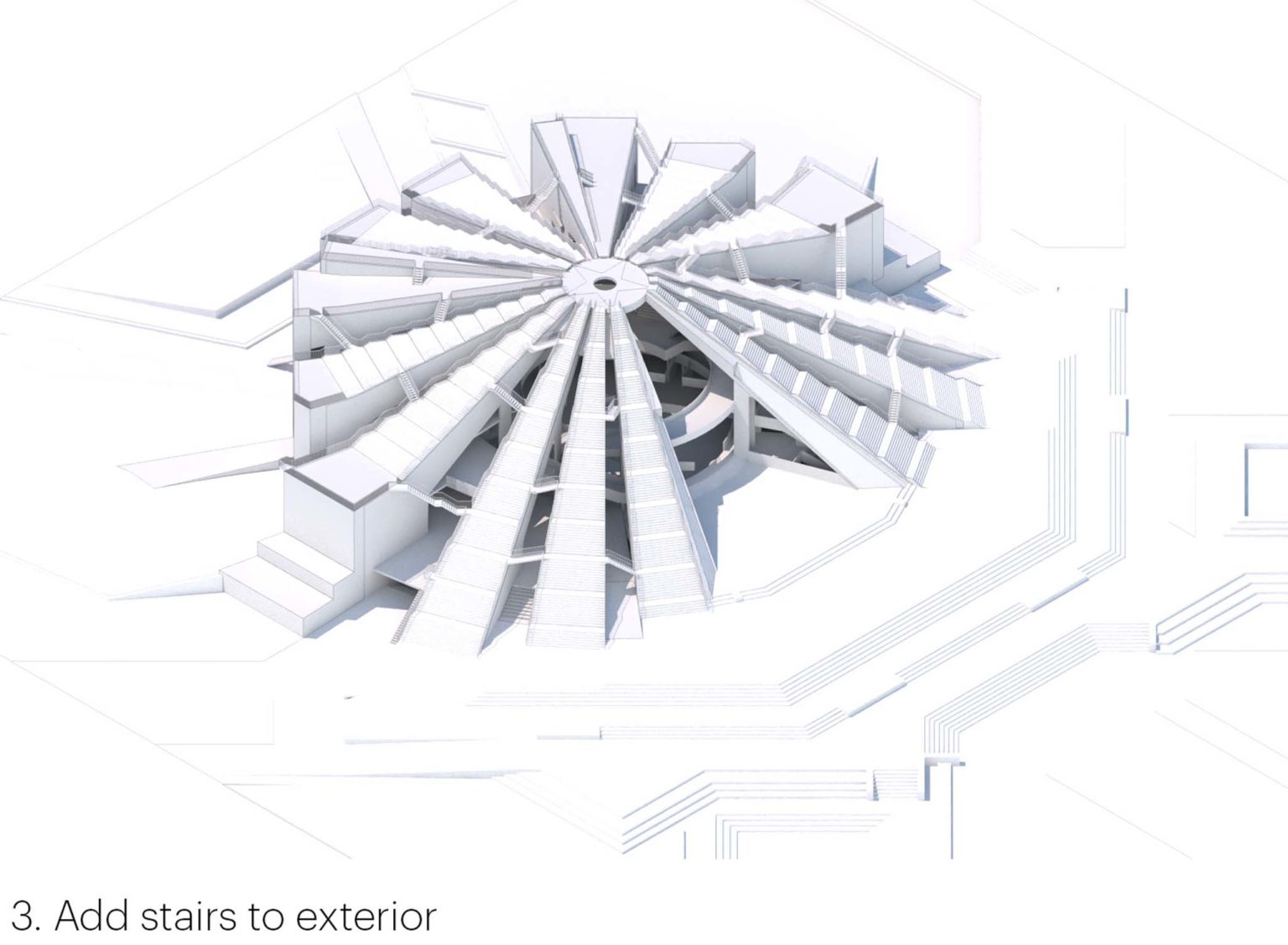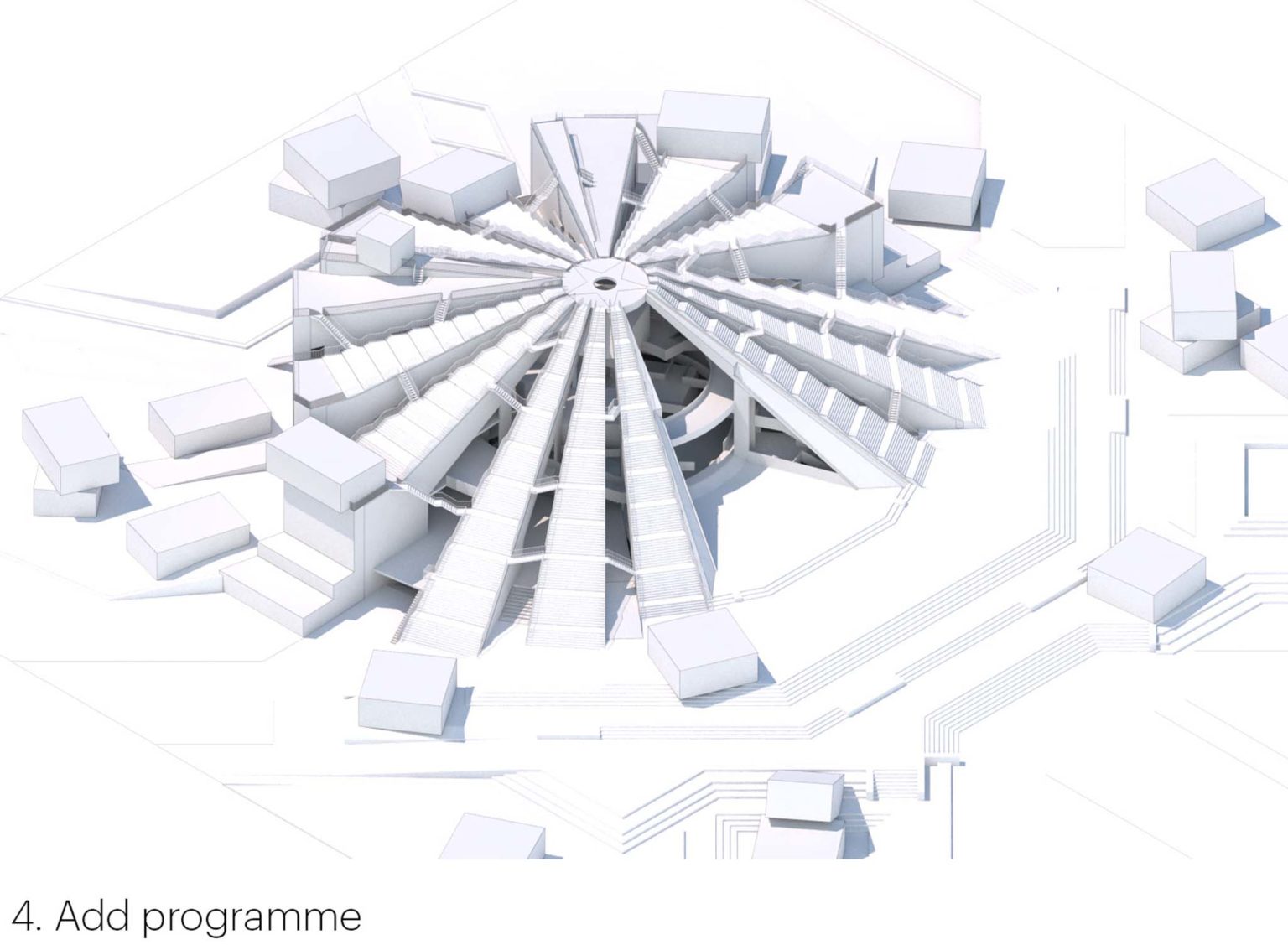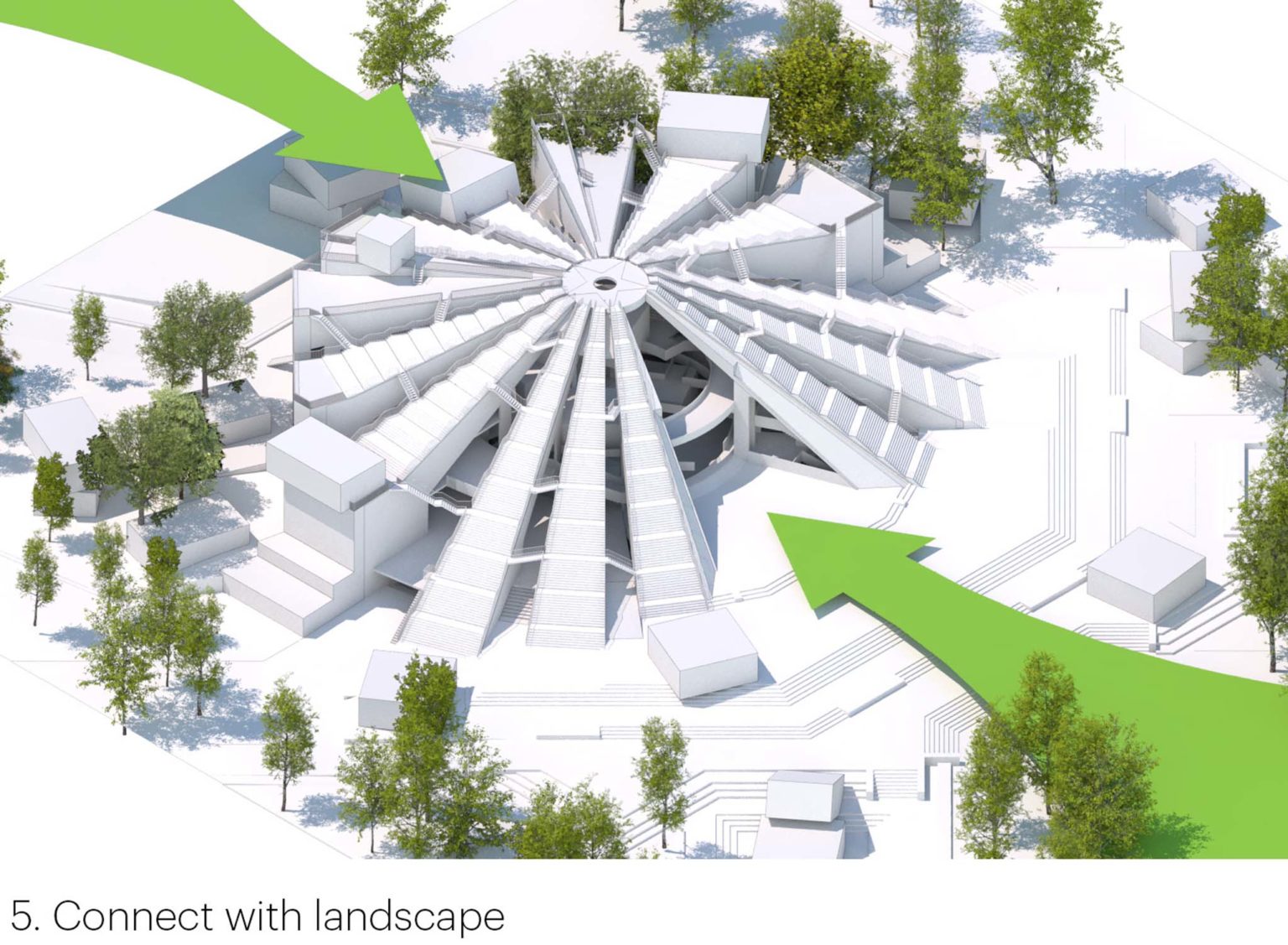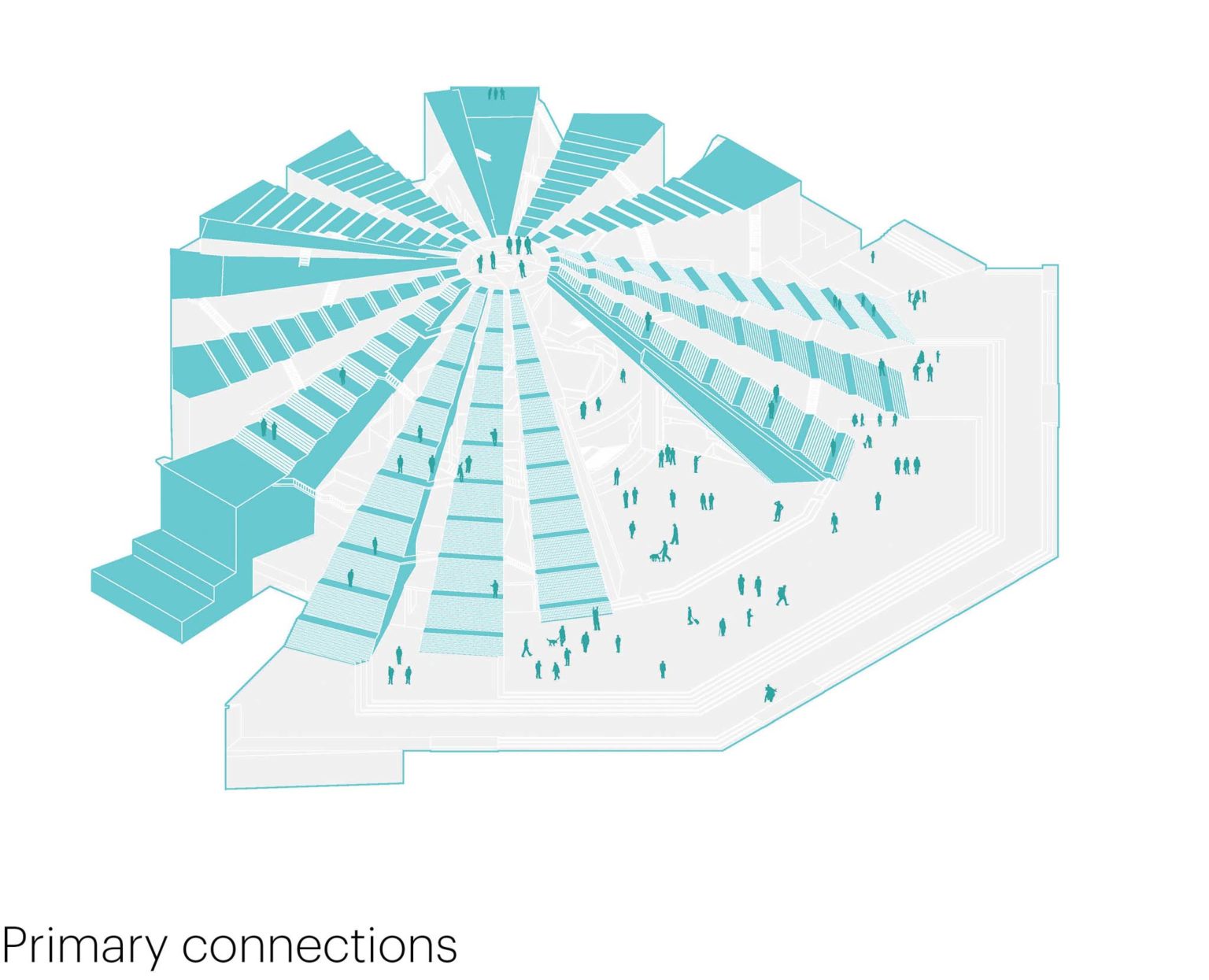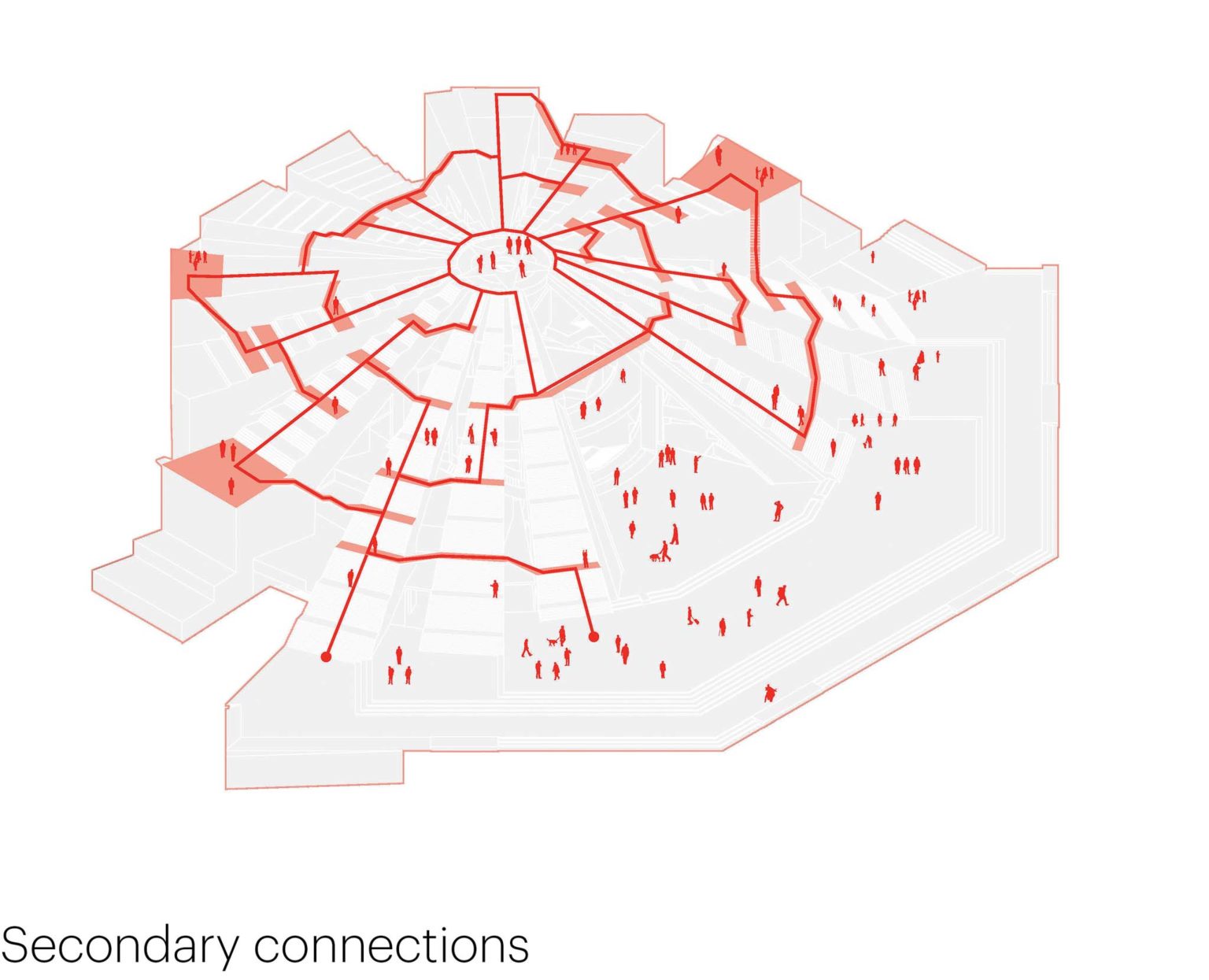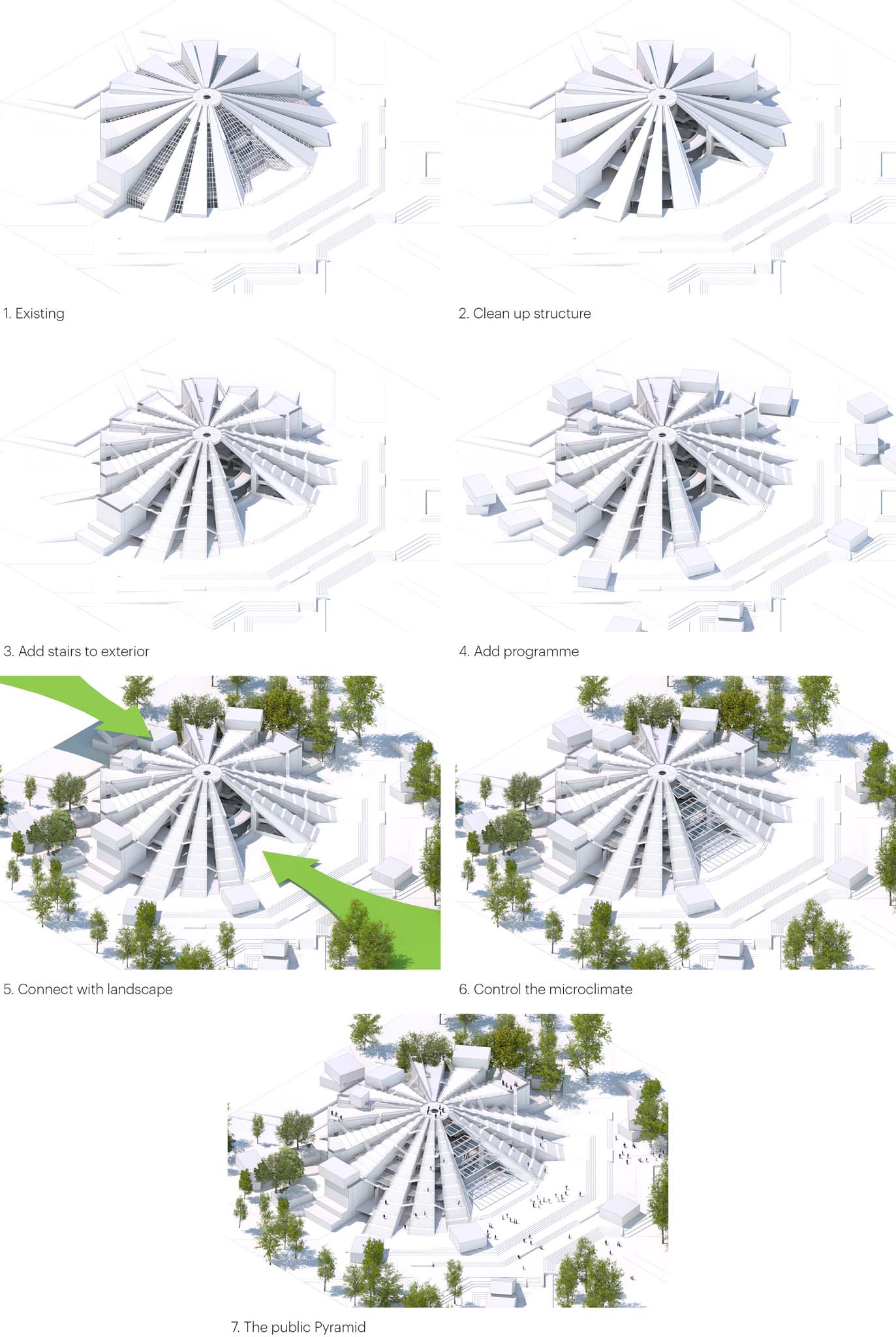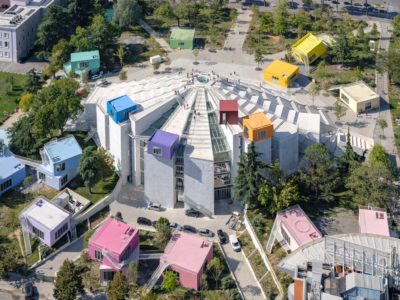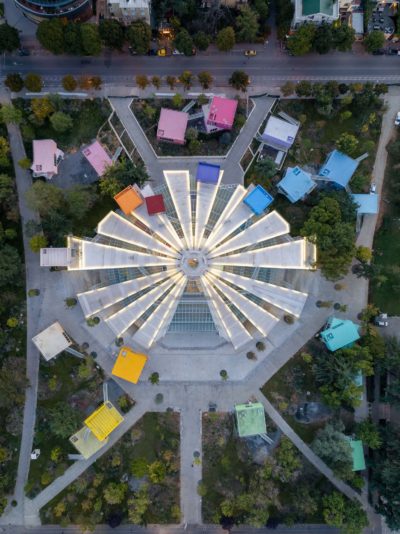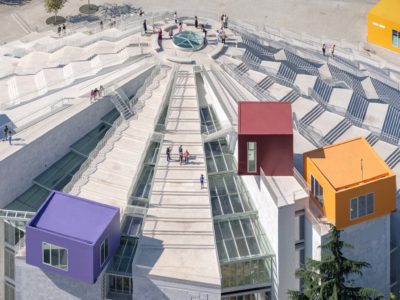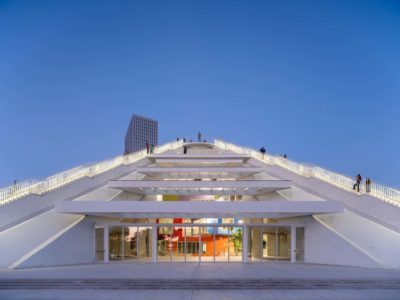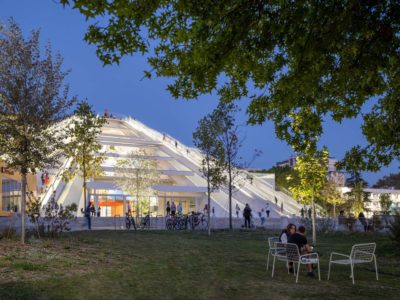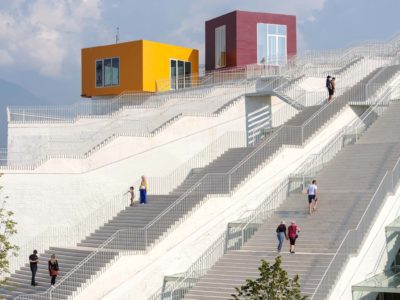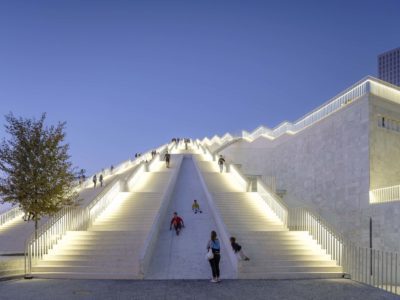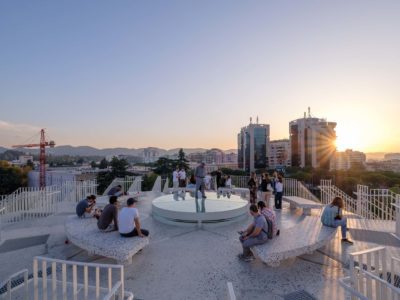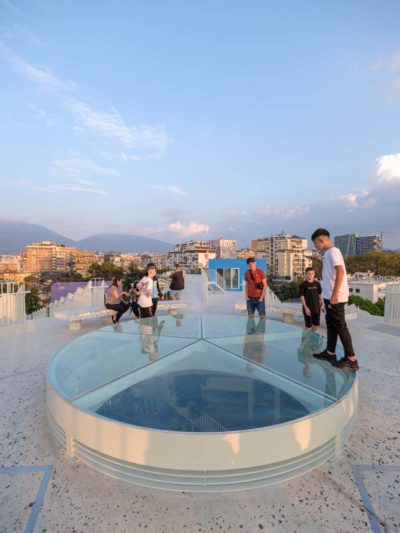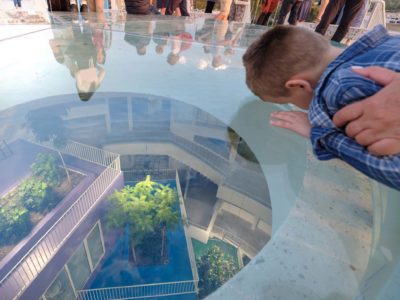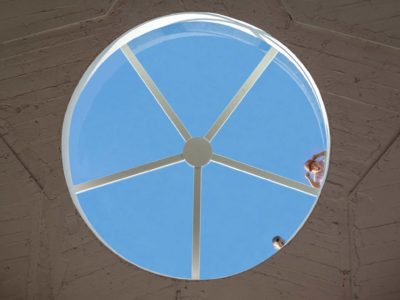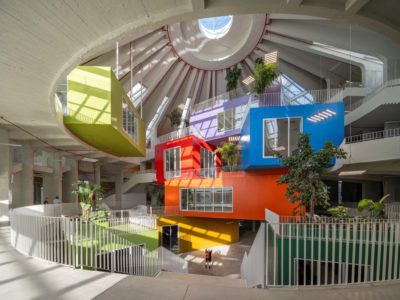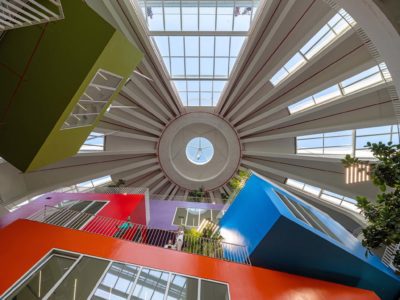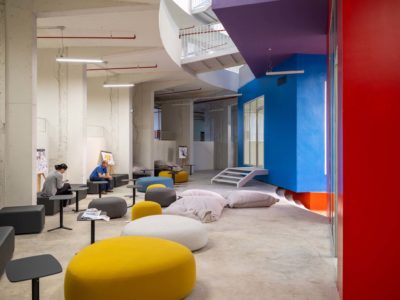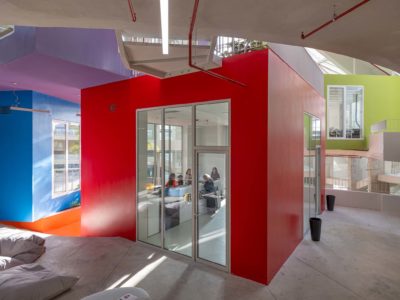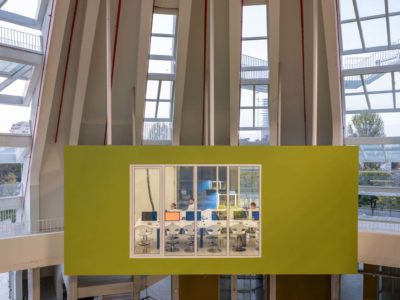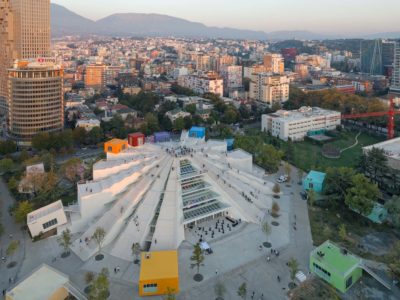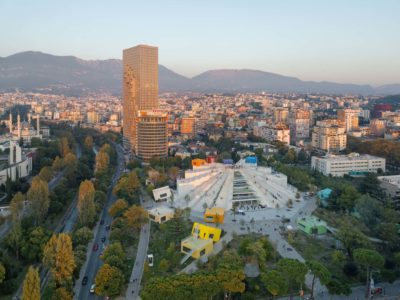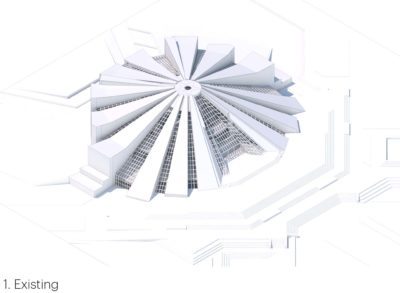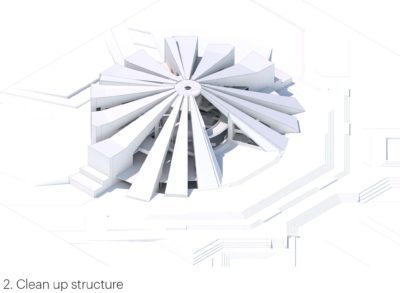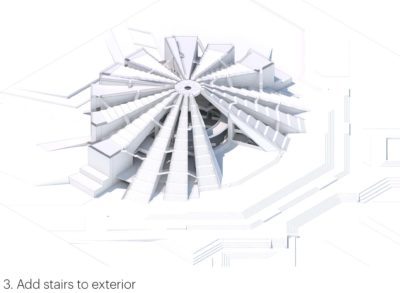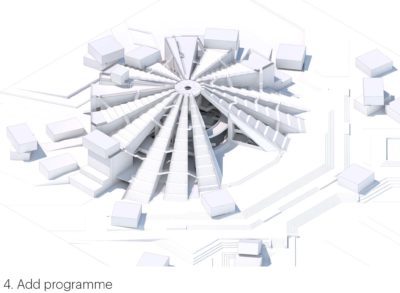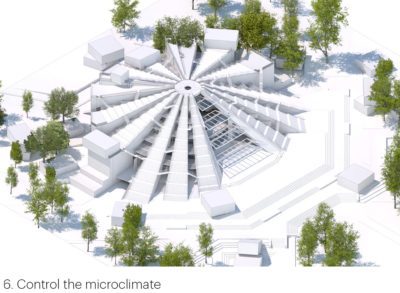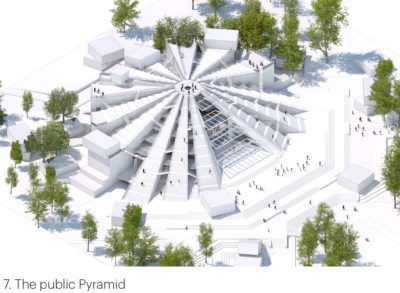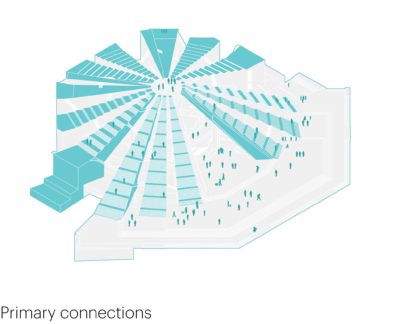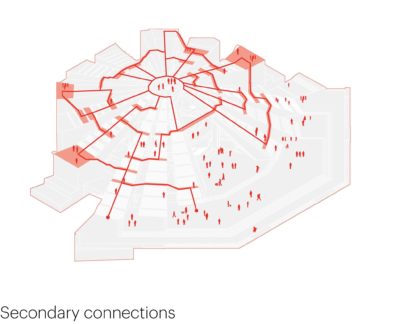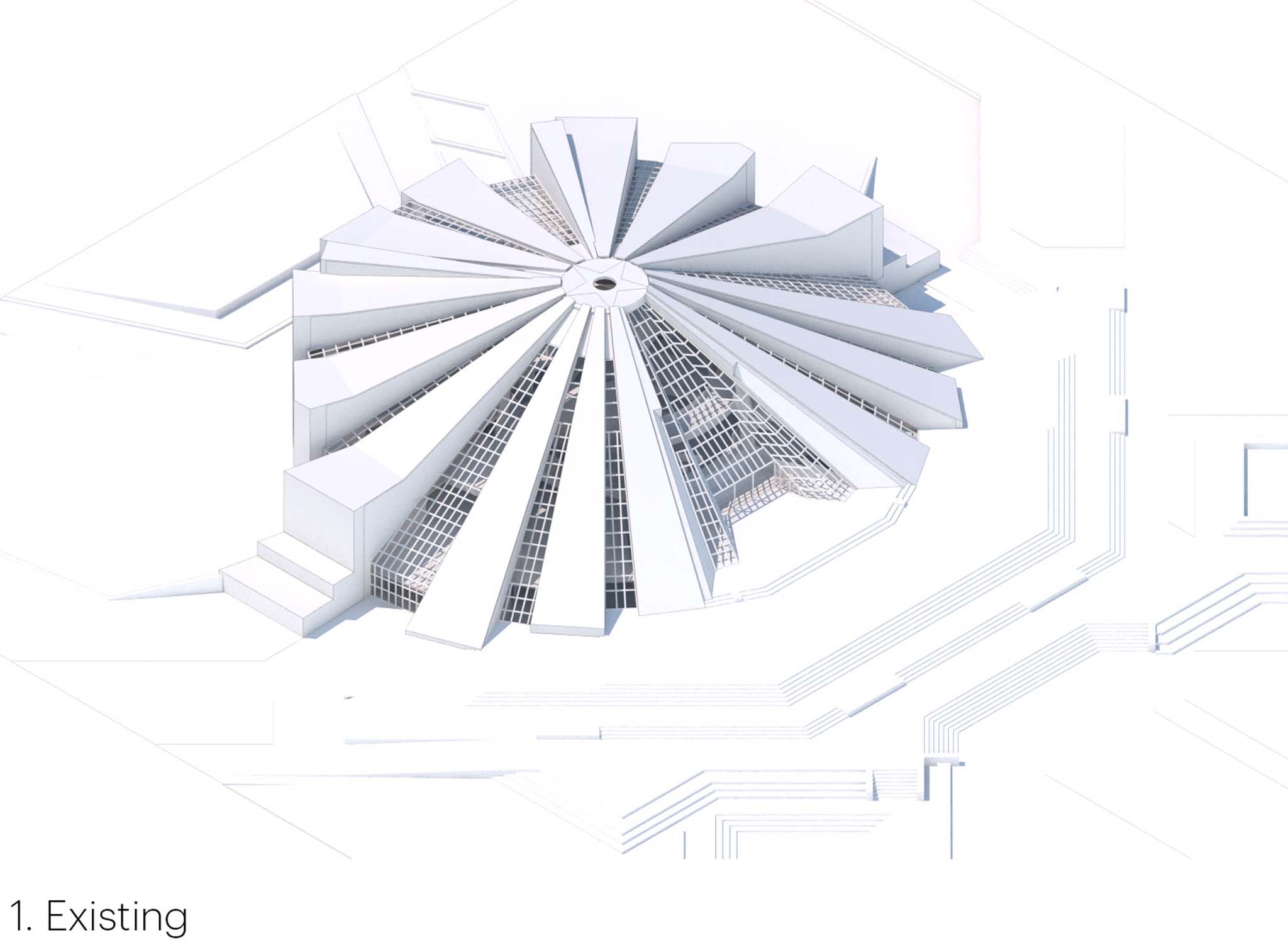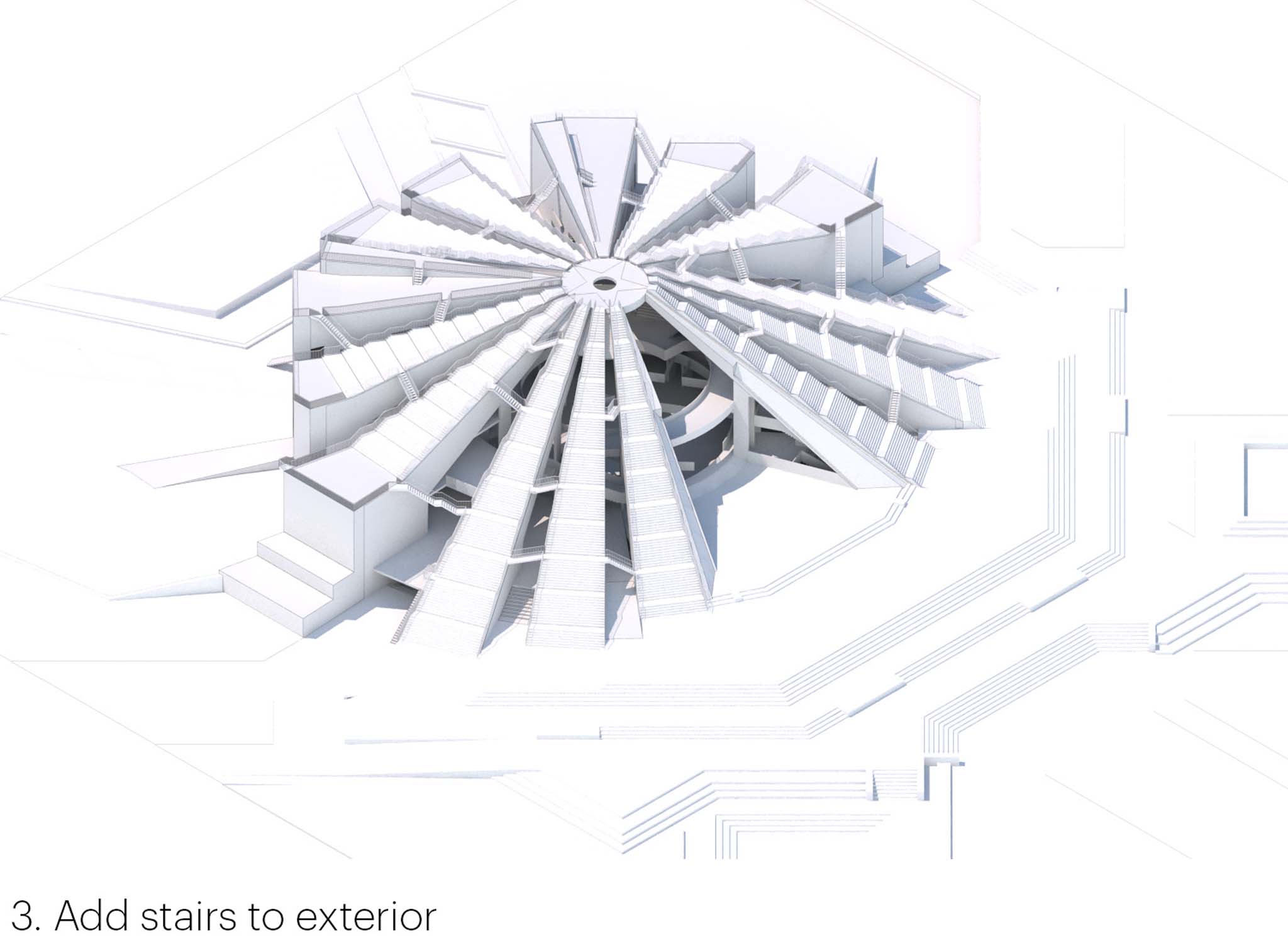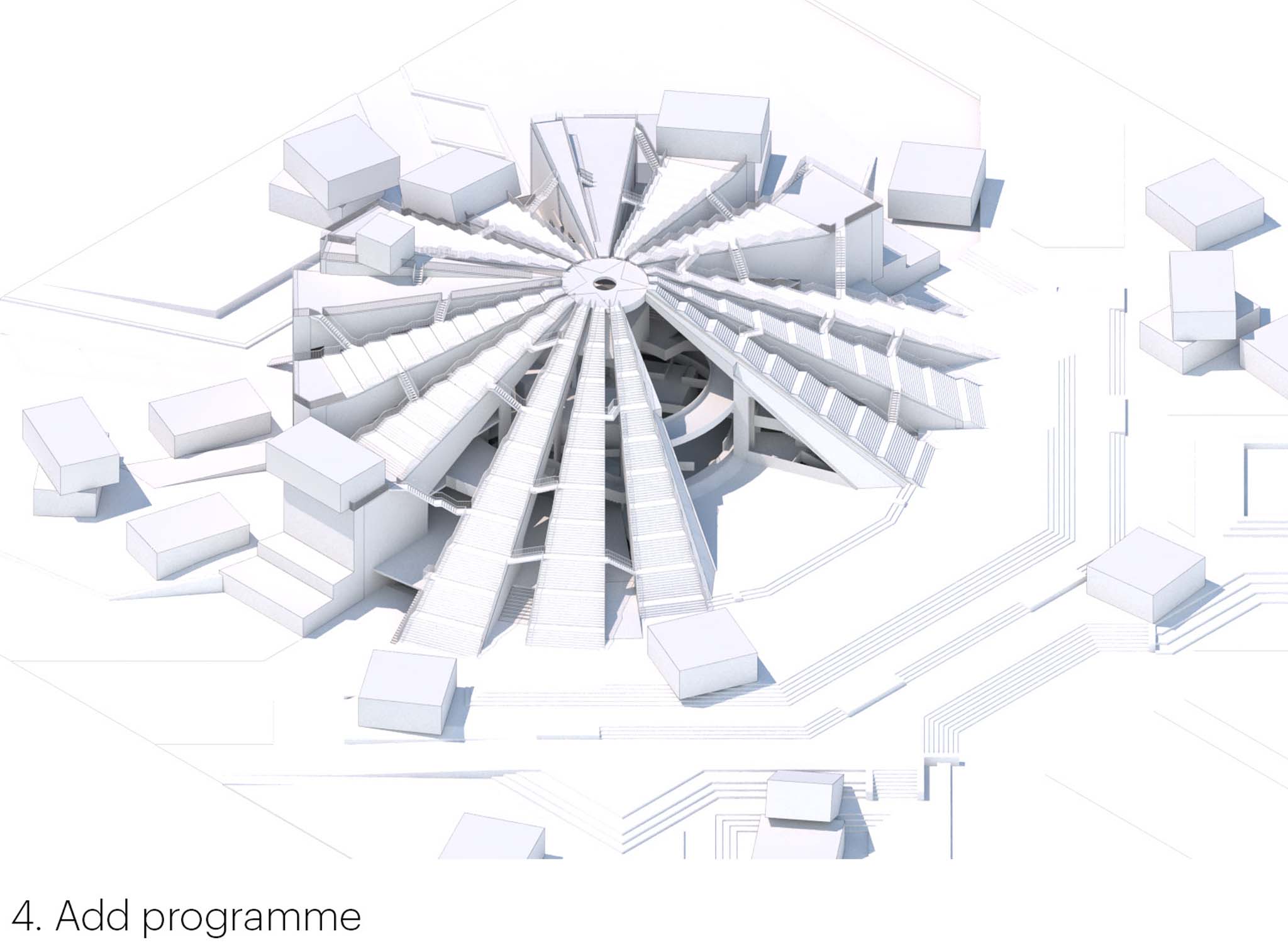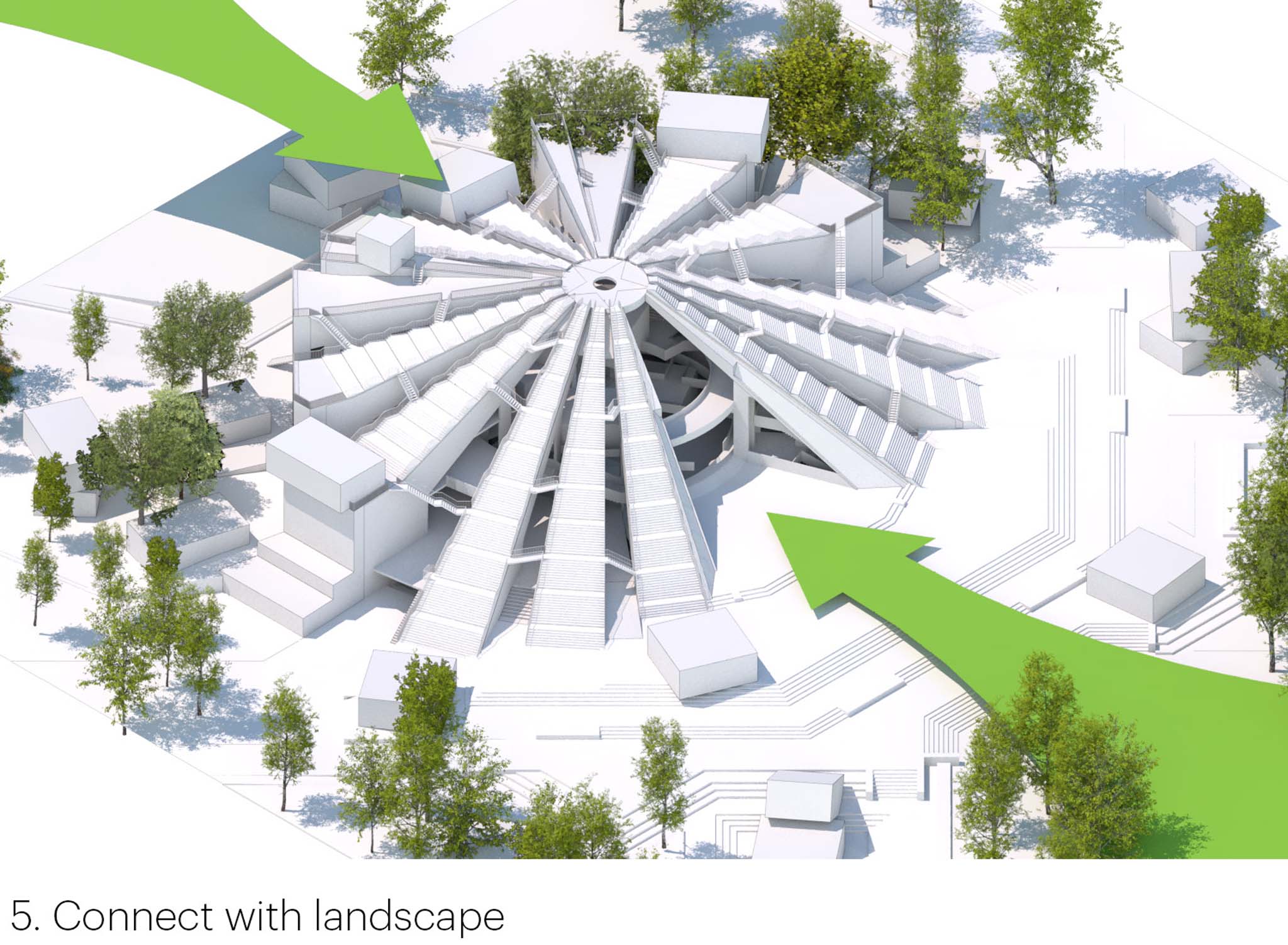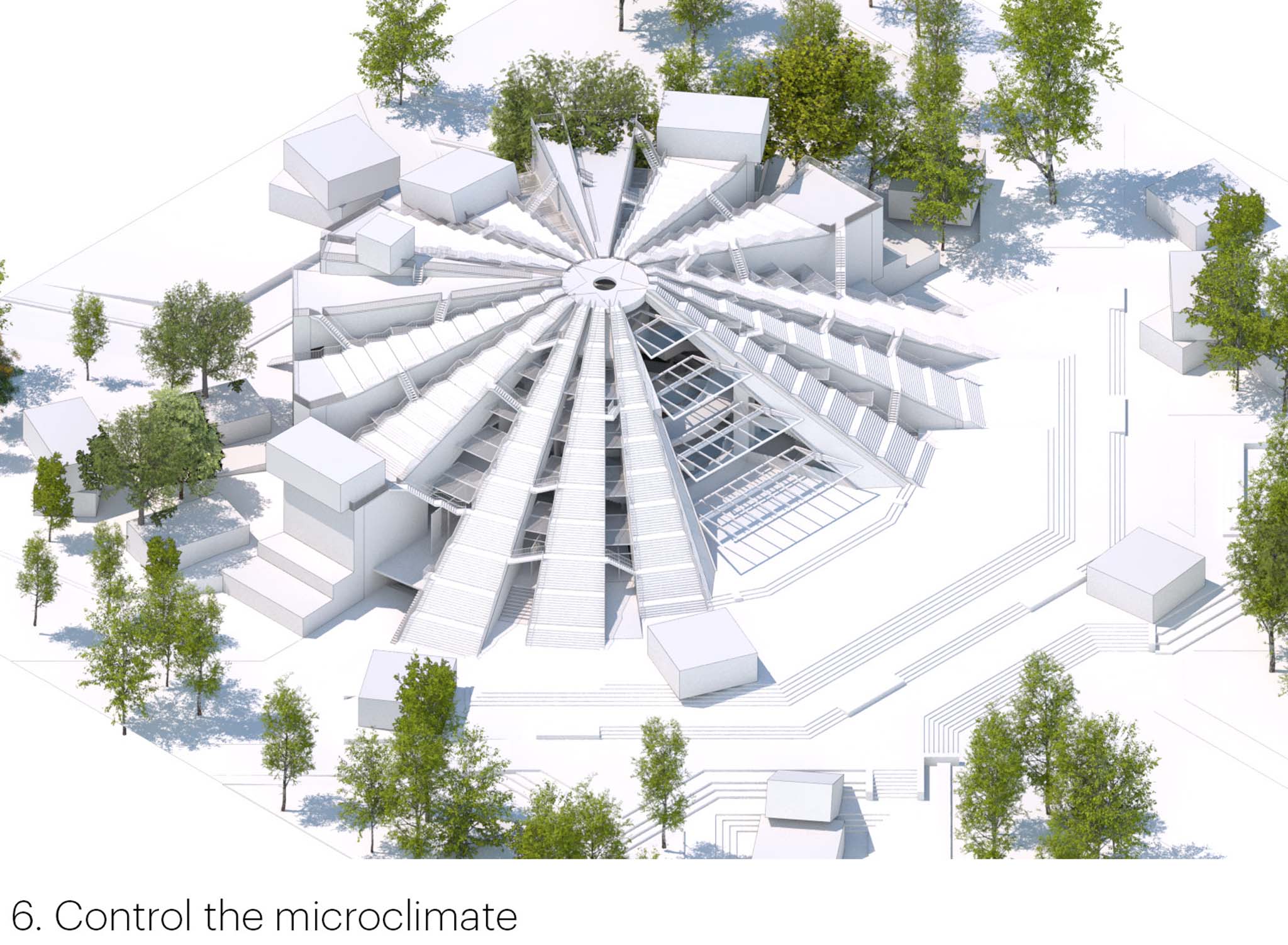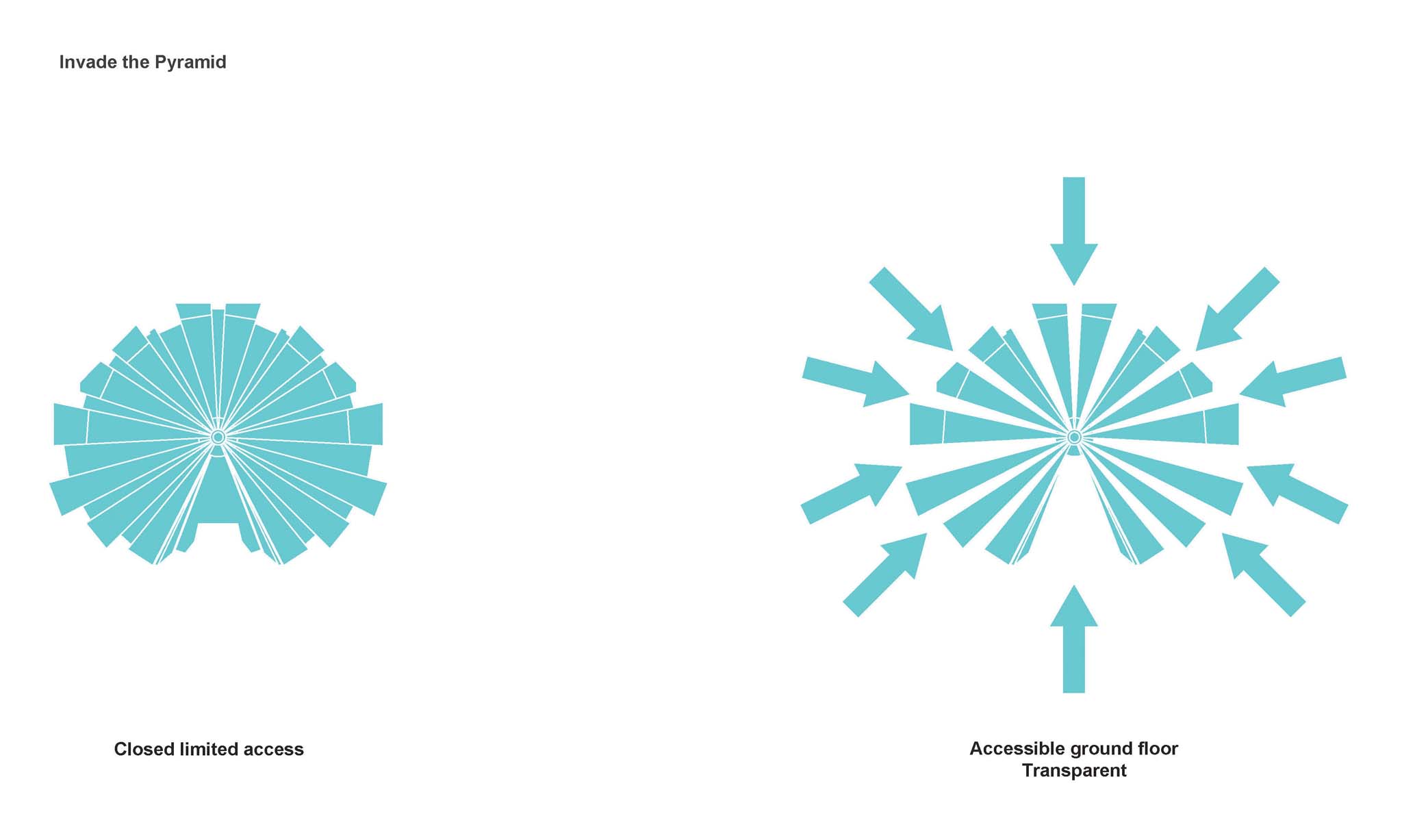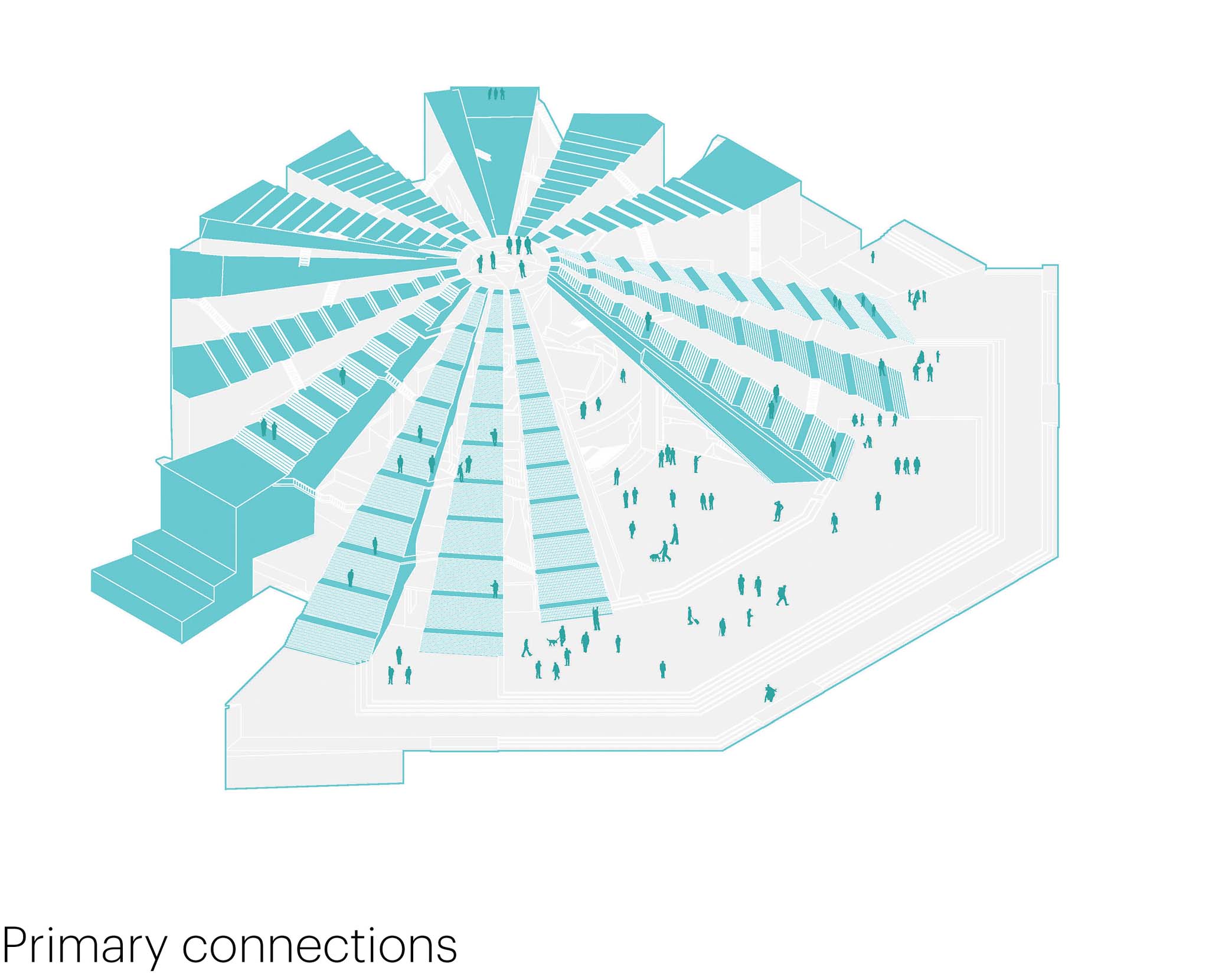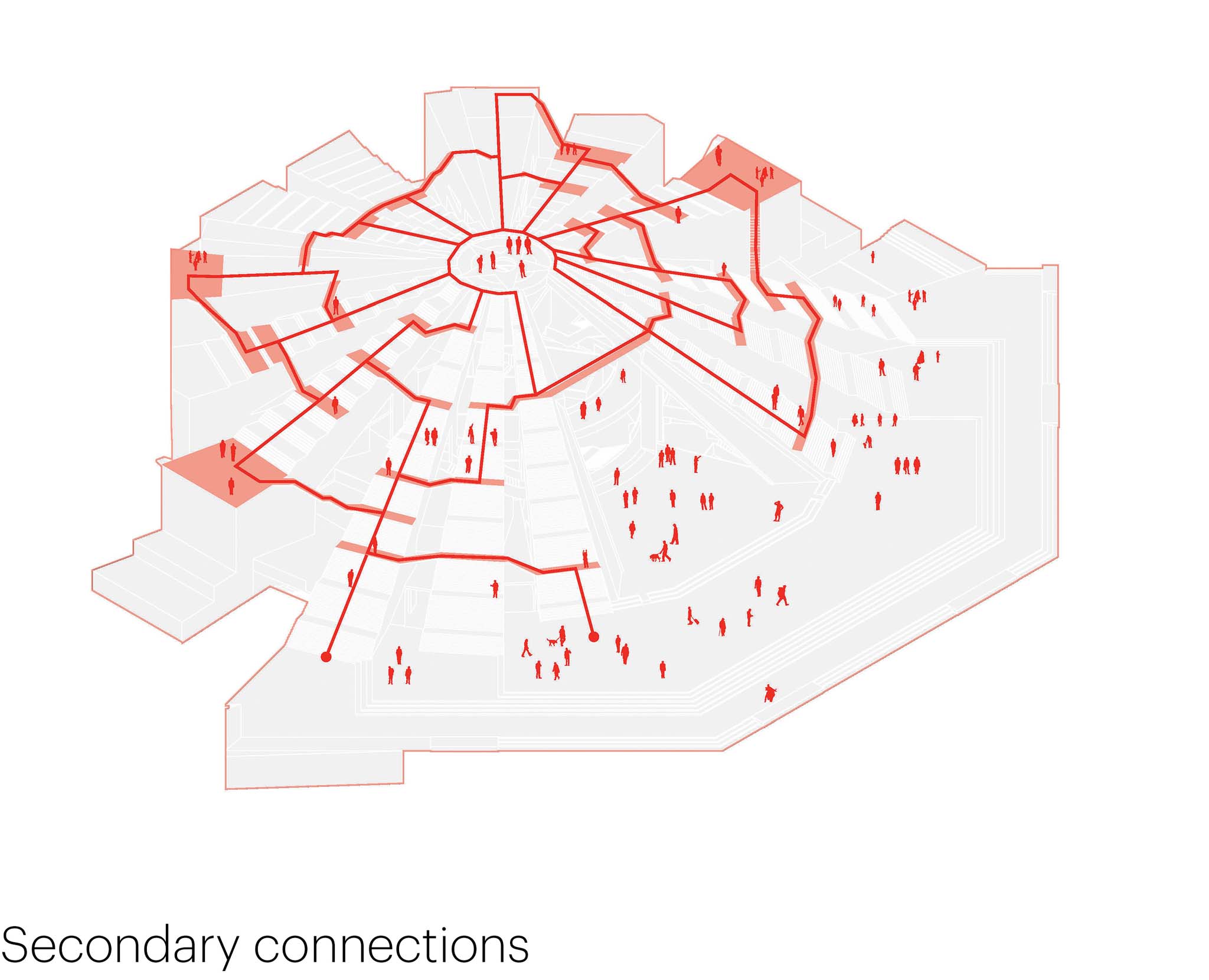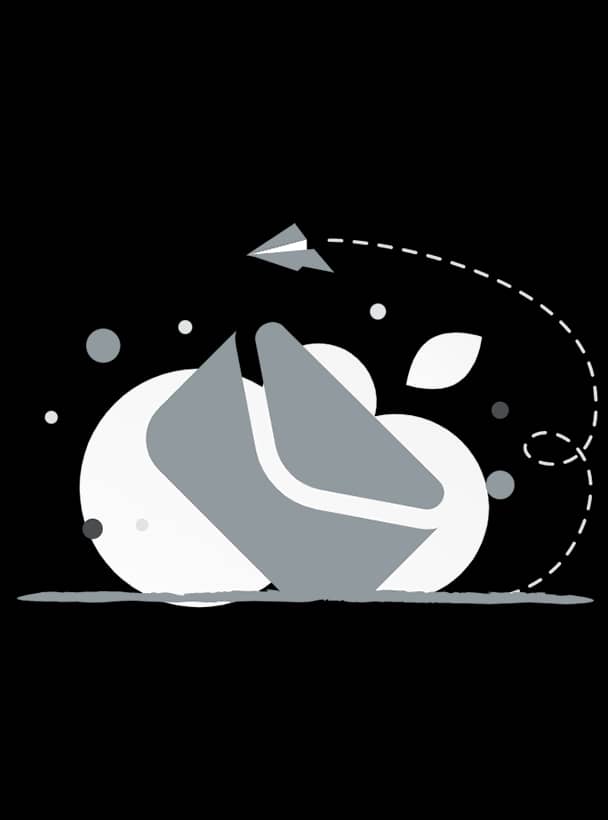Project Credits & Specs
- Architecture: MVRDV
- Photography: Ossip van Duivenbode
- Location: Tirana, Albania
- Area: 11 835 m2
- Year: 2023
More
- Founding Partner in Charge: Winy Maas
- Partner: Stefan de Koning
- Design Team: Ronald Hoogeveen, Stavros Gargaretas, Guido Boeters, Angel Sanchez Navarro, Boris Tikvarski, Jasper van der Ven, Mirco Facchinelli, Manuel Magnaguagno, Leo Stuckardt
- Visualisations: Antonio Luca Coco, Luca Piattelli, Jaroslaw Jeda, Luana La Martina, Gianlorenzo Petrini
- Strategy and Development: Willeke Vester, Daan van Gool
- Copyright: MVRDV Winy Maas, Jacob van Rijs, Nathalie de Vries
Partners: - Co-architect: iRI Architecture
- Landscape architect: iRI; JESHILE; MVRDV
- Structural engineer: ARUP; Gentian Lipe; Luan Murtaj
- MEP: ARUP; iRI; Nikolin Risilia; Artur Dado; Isuf Kore
- Monuments Expert: Daniel Gjoni
- Cost calculation: iRI Architecture
- Environmental advisor: Arben Liçi
- Contractor: Fusha shpk
- Client: Albanian-American Development Foundation (AADF)

Project Description
In the heart of Albania’s capital city, a new kind of cultural hub is now open and accessible to the public. The Pyramid of Tirana, originally built as a museum dedicated to the communist dictator Enver Hoxha, has been dramatically transformed by MVRDV. Reusing the concrete structure, the Pyramid is now an open sculpture in a new park. The park and the sculpture are home to an ensemble of colorful boxes, scattered in and around the original building that now houses cafés, studios, workshops, start-up offices, incubators, festivals, and classrooms where Albanian youth will learn various technology subjects for free. Steps have been added to the building’s sloping façades, allowing the people of Albania to literally walk all over the showpiece of the former dictator.
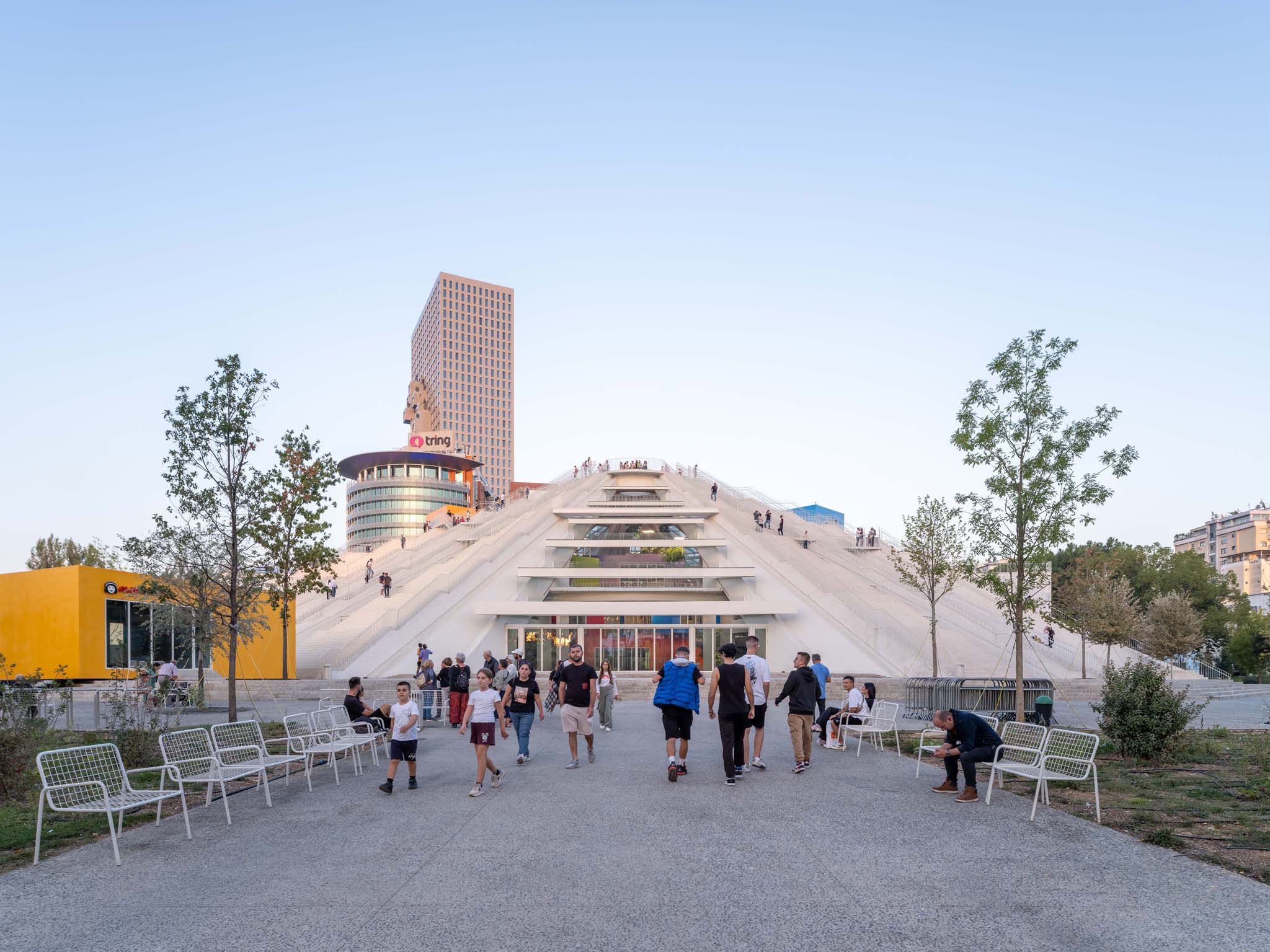
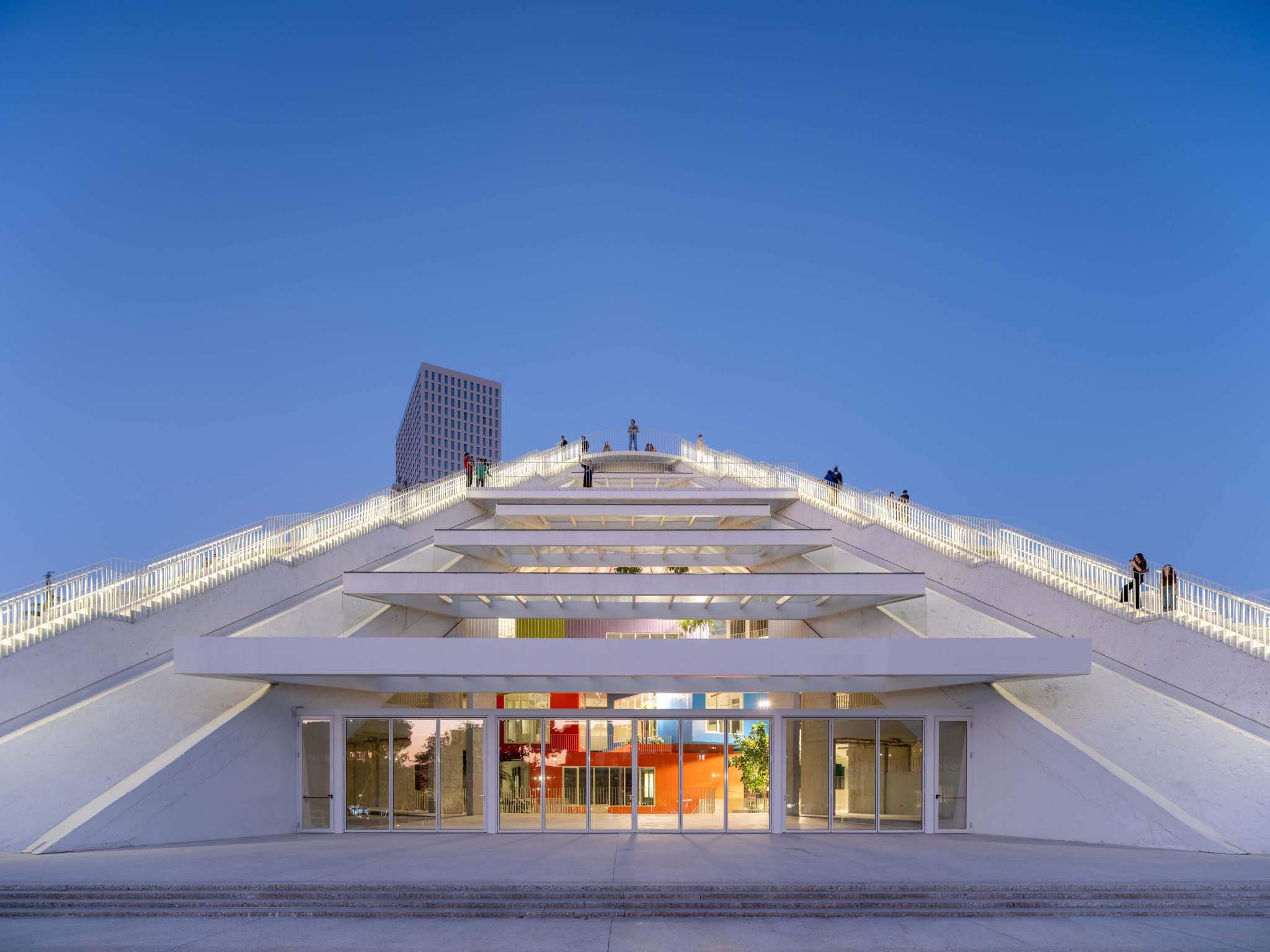
Even though Tirana’s Pyramid was until recently a building site, it was already heavily in use the past summer. Besides Albanians enjoying the city views, the Pyramid was also discovered by tourists as a hidden gem. With an EU Summit and the official inauguration of the building as a free educational faculty for Albanian teens by TUMO on October 16th, the Pyramid is now officially giving back to the people.
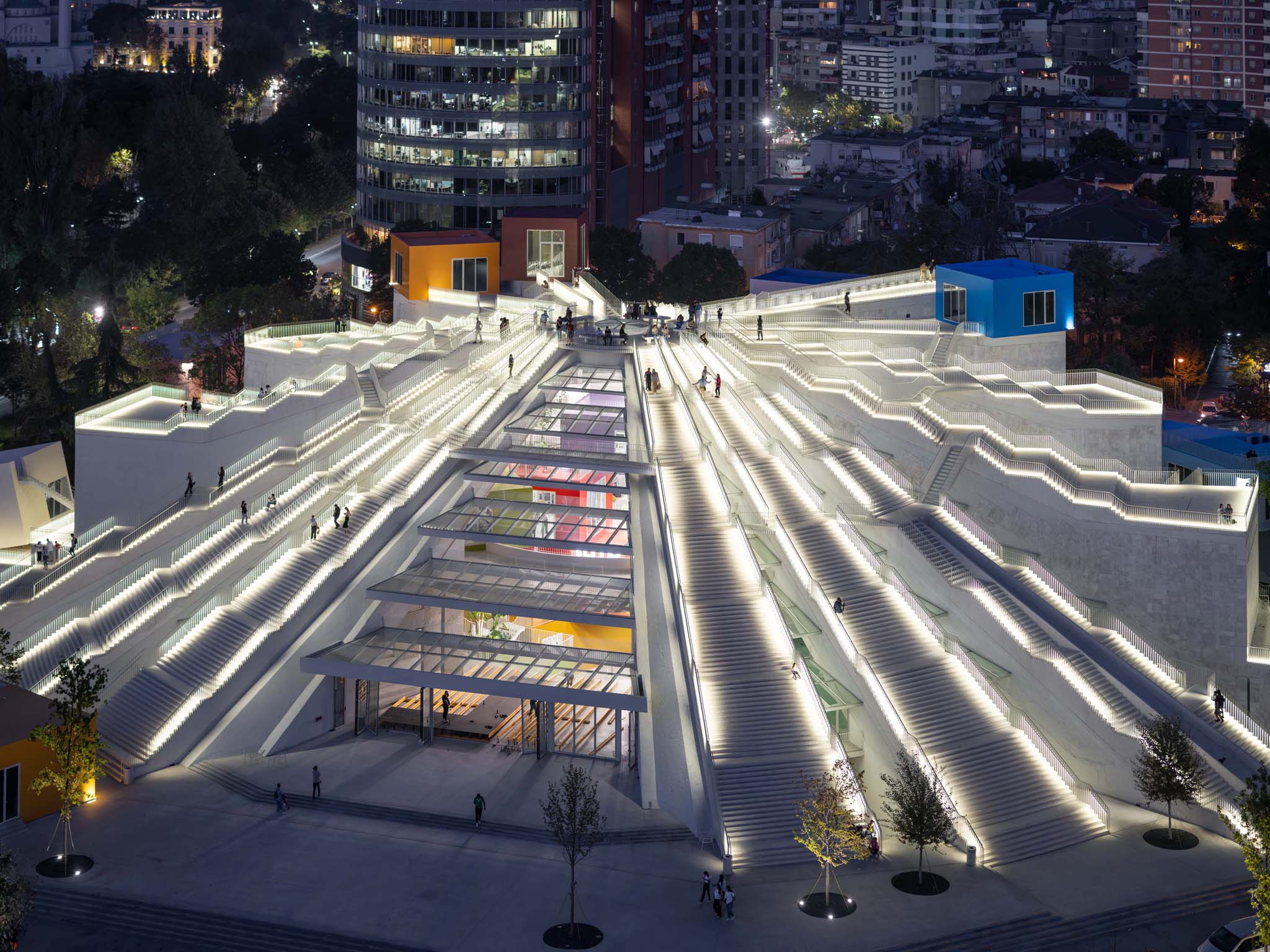

First opened as a museum in 1988, the Pyramid of Tirana has led numerous lives. Since the fall of the communist regime, the building was variously used as a radio station, a nightclub, a conference venue, a broadcast center, and, during the 1999 Kosovo War, a base for NATO. The ever-changing uses, along with incomplete previous renovation plans, left behind a patchwork of alterations that made the interior cluttered and dark.

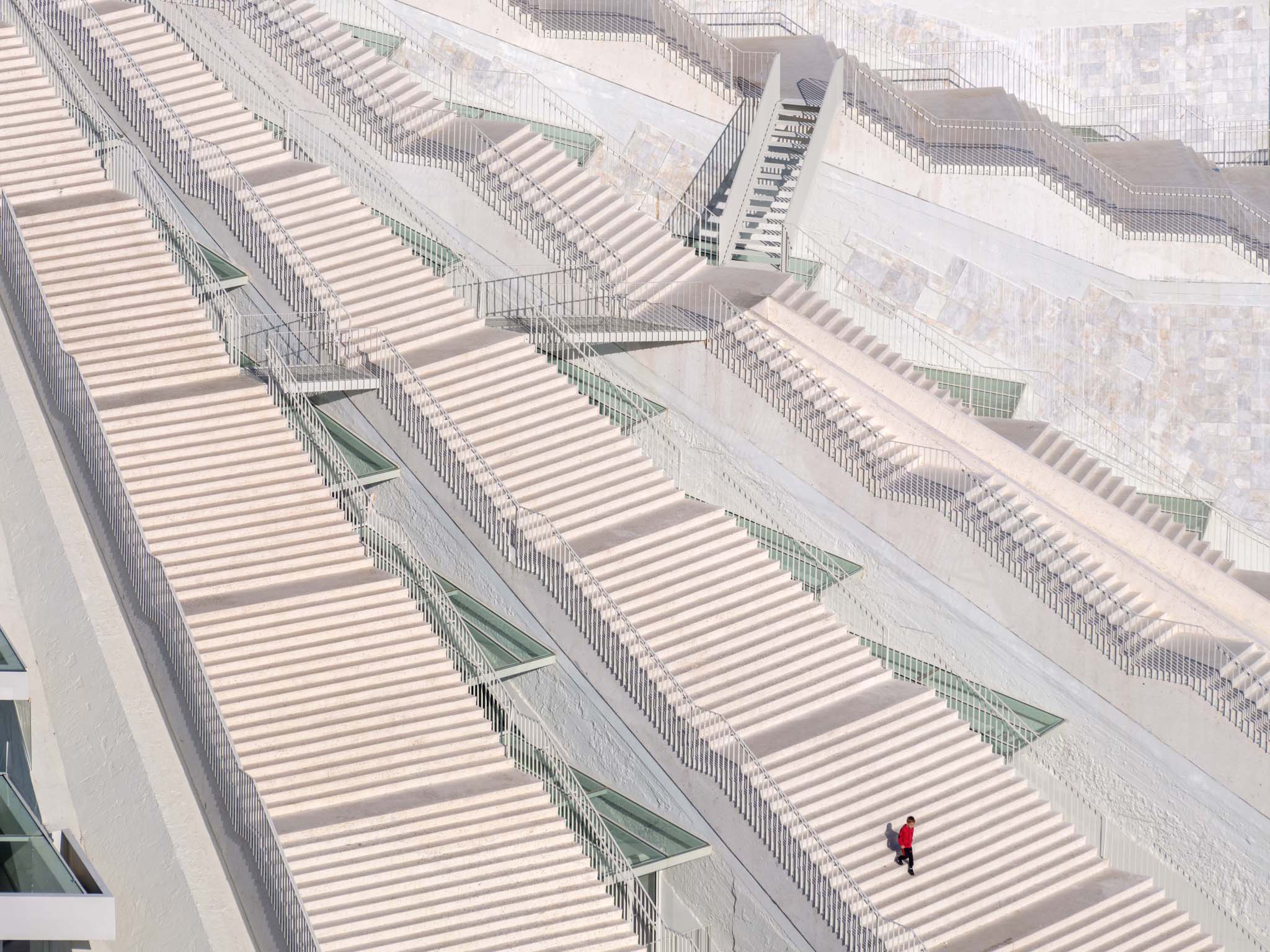
In recent decades, the question of what to do with the building proved highly controversial. A study published in 2015, however, showed that the majority of Albanians were opposed to demolishing the building, and in 2017 this desire was honored when the government announced plans to transform the concrete monolith. This promise was carried out with the help of the Albanian American Development Foundation (AADF) and the Municipality of Tirana, with the decision made to turn the building into a nurturing environment for young Albanians.


For many Albanians, the Pyramid is a symbol of victory over the regime, and MVRDV’s design was inspired by the way that they had reclaimed the building. After the death of the dictator, the deteriorating structure had long served as a hangout spot for Tirana’s youth, who would climb the sloping beams and – not without risk – slide back down. Now, steps rise up the sloping sides, allowing people of all ages to climb to the top of the building. On the western side, a lift gives access to the top of the Pyramid for those who can’t climb the steps, while one beam incorporates a sloped section where people can still slide to the bottom.
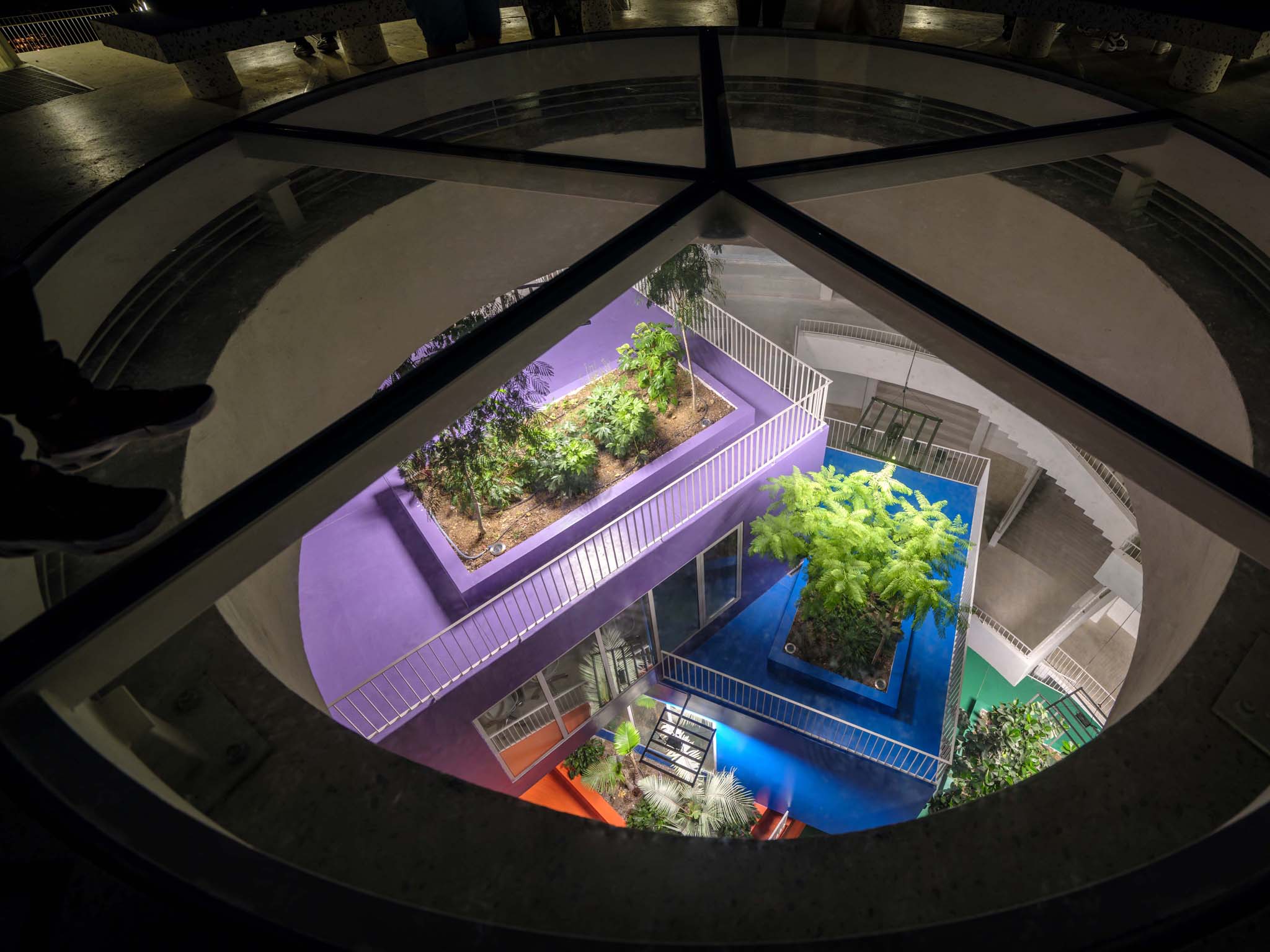
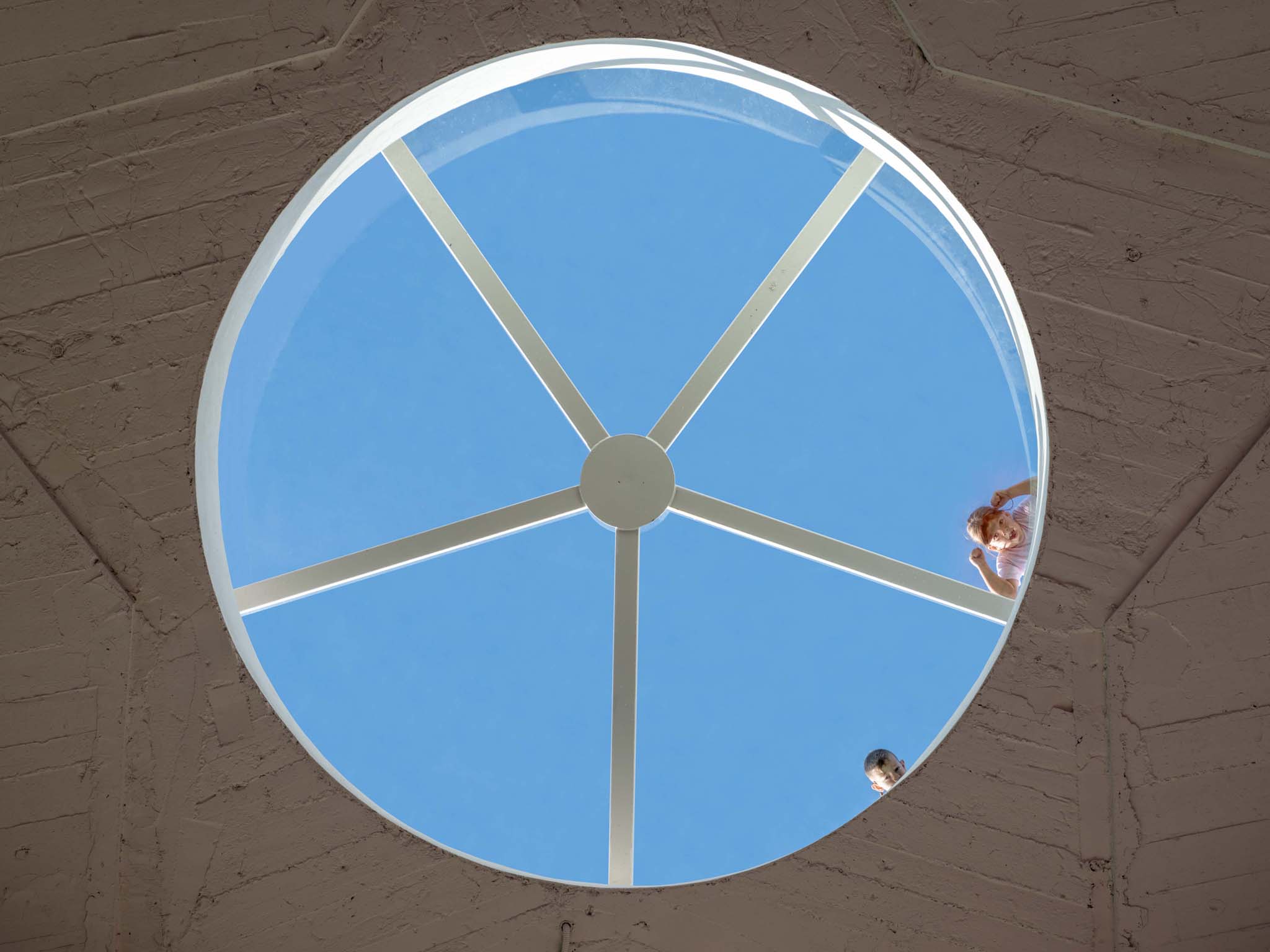
“The first time I saw the Pyramid being walked all over by the youth of Tirana, I was deeply touched by its symbolism and by its incredible optimism”, says MVRDV founding partner Winy Maas. “Keeping in mind this was the most expensive building the communist state had ever realized in a time when the oppressed Albanian population was living in poverty, we removed all symbols glorifying the dictatorship in our transformation. We did keep some of the original details so visitors are also aware of the building’s dark past. The structure is completely open as a ruin in the park, and all these boxes are ‘squatting’ in and around the structure. Once sardonically called the ‘Enver Hoxha Mausoleum’, the transformed Pyramid has now become a monument for the people and their ability to overcome and outlive dictators.
”The work of MVRDV’s design team encompasses and encircles the existing structure, using the structure as a blueprint to which publicly accessible spaces and boxes for education and events were added. A stack of colored boxes containing rooms for education and events is scattered in and around the structure and the park. These colorful additions are also found on top of the structure, and in the park at the front of the building, giving the surroundings the atmosphere of a festival and even a “squatted” area.
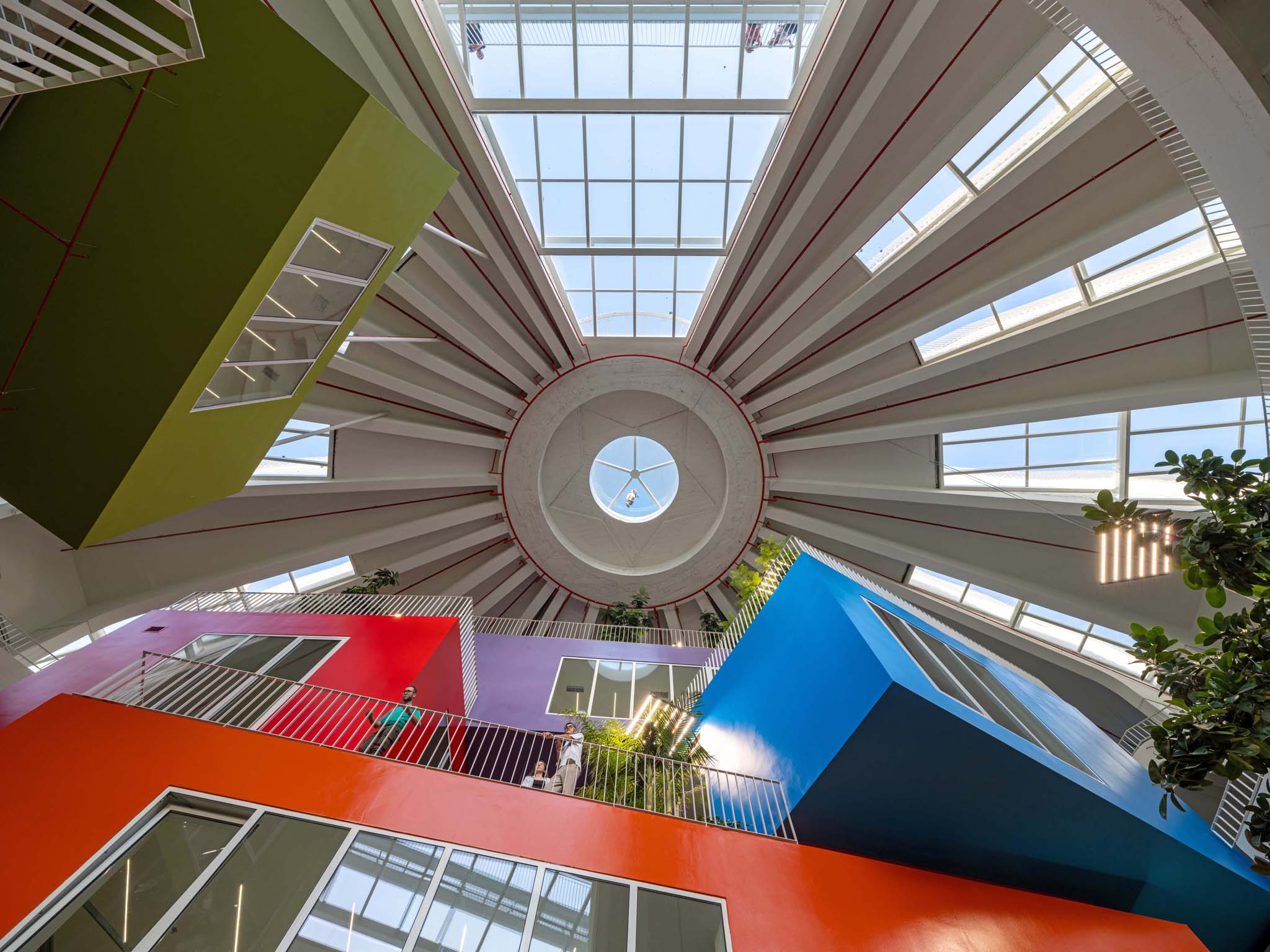

Around half of these spaces will house the non-profit educational institution TUMO Tirana, which provides free afterschool education for 12- to 18-year-olds in new techniques such as software, robotics, animation, music, and film. Founded in Armenia in 2011 and since then spreading throughout Europe, TUMO helps to provide education and opportunities that can be a tool against the “brain drain” that threatens the economy of countries like Albania. The other half of the colored boxes will be accessible to the public, hosting rental spaces for cafés, restaurants, start-up offices and labs, incubators, studio spaces, and more.
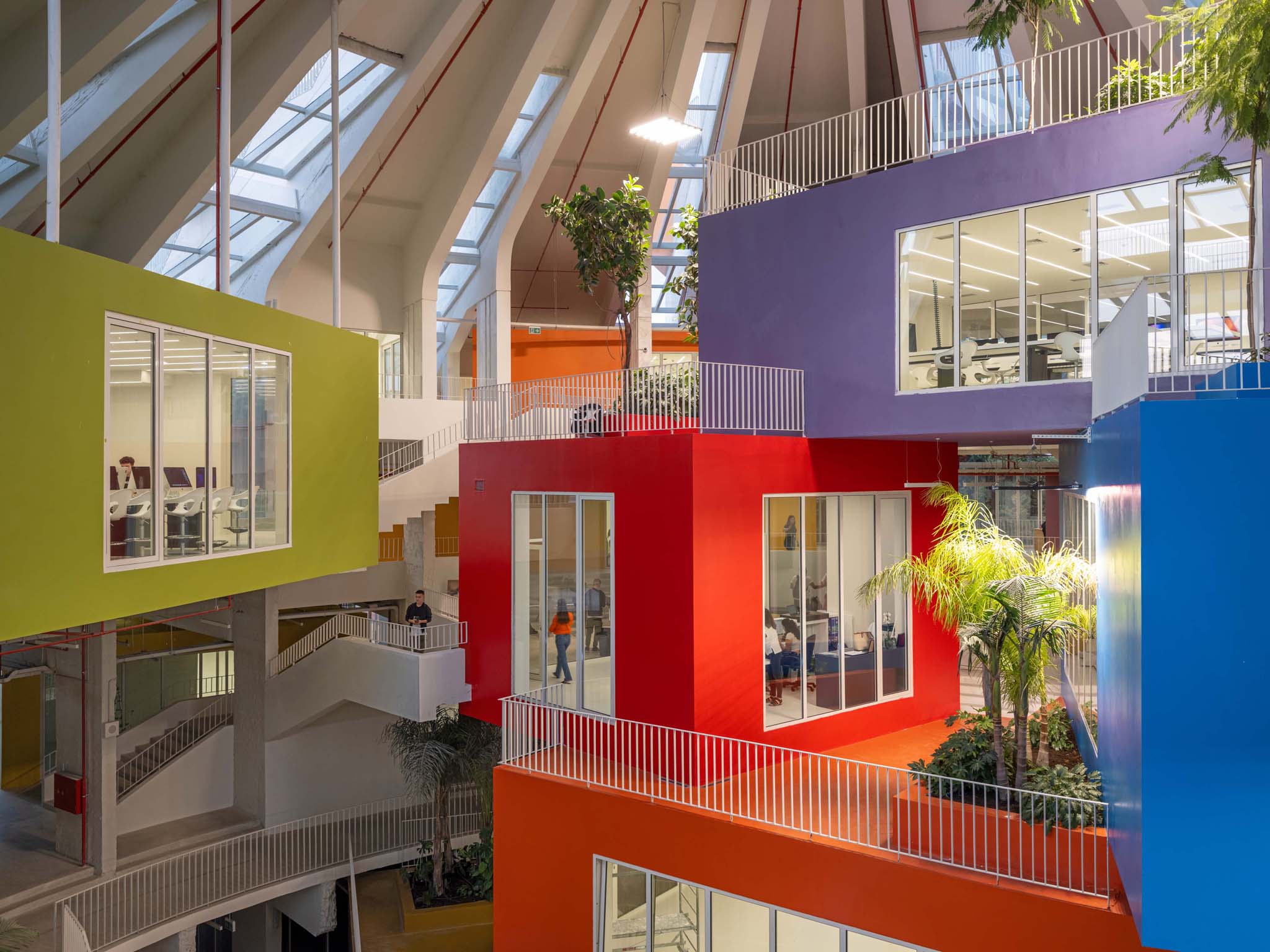

The transformation of the Pyramid shows how a building can be made suitable for a new era, while at the same time preserving its complex history, and demonstrates that historic brutalist buildings are ideal for reuse. The project also meets a number of the Sustainable Development Goals outlined by the United Nations. Rather than wastefully demolish the structure, its robust concrete shell is adapted along circular economy principles. As the majority of the structure is open to the surroundings for most of the year, only the added boxes housing the educational program need to be climate-controlled, reducing energy consumption. Social sustainability is advanced in the building’s new use, with the educational program advancing education and preparing the next generation for success.
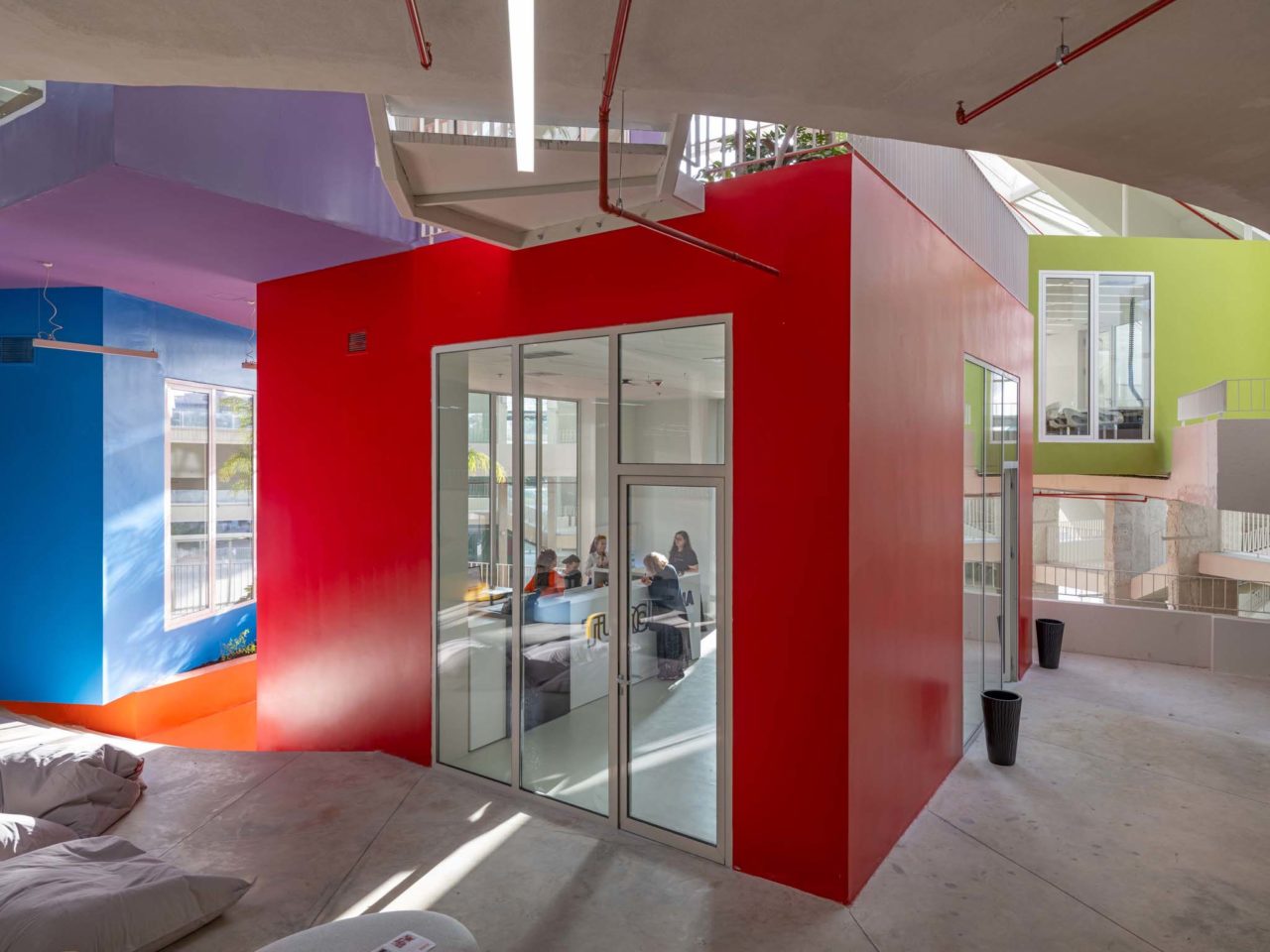
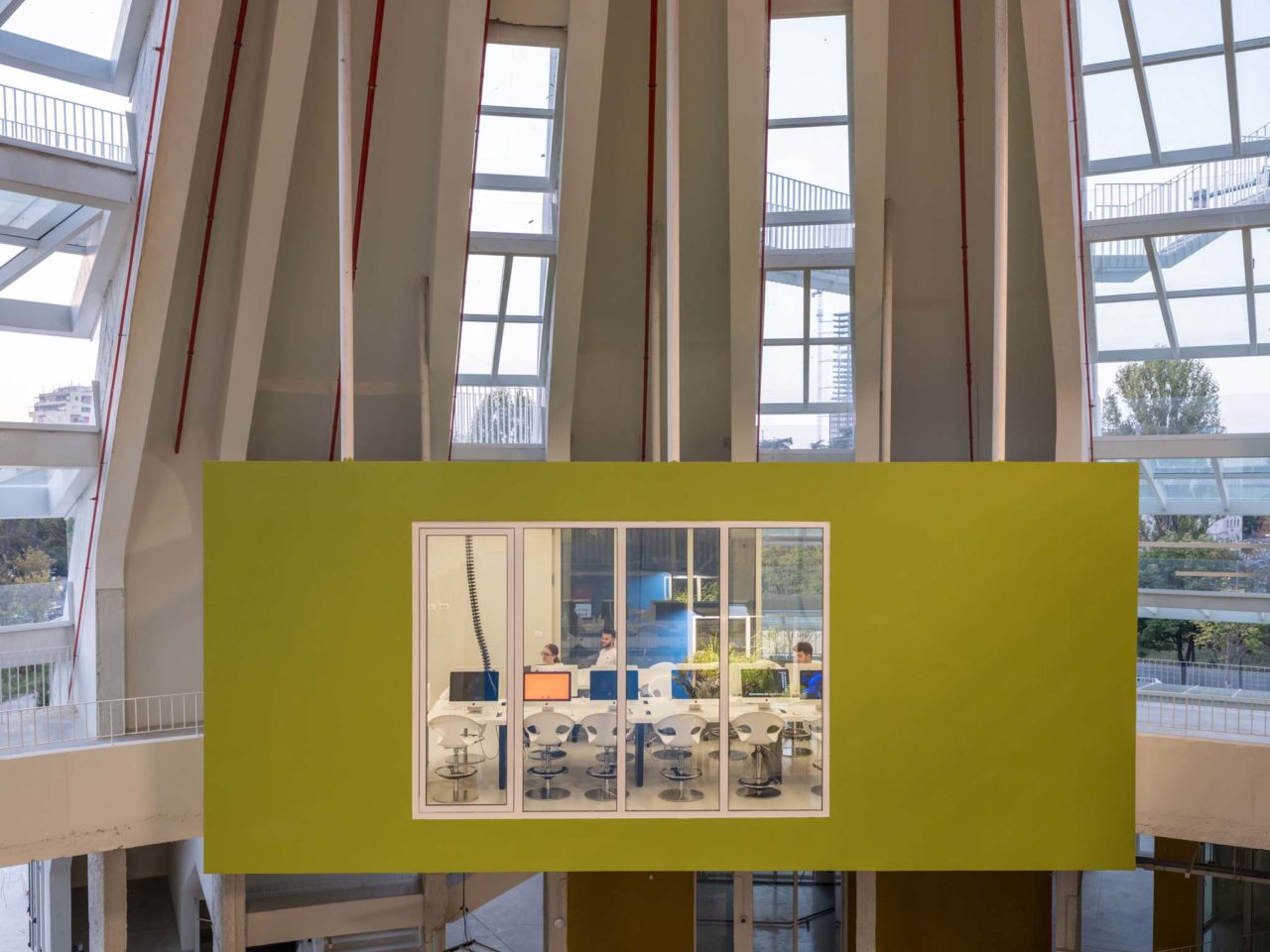




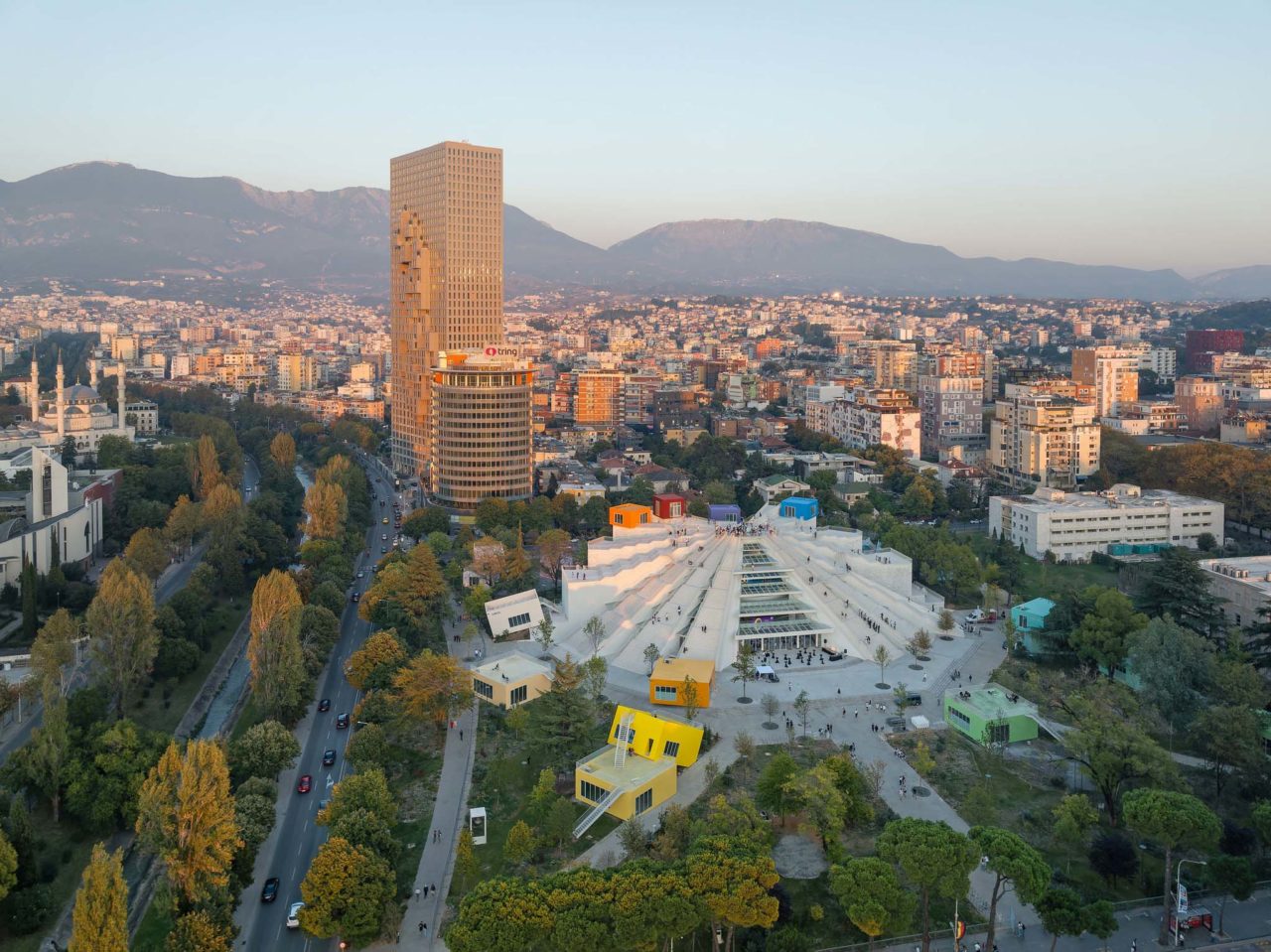
The project description is provided by the architects.
About the Architects

MVRDV was founded in 1993 by Winy Maas, Jacob van Rijs, and Nathalie de Vries. Based in Rotterdam, the Netherlands, they have a global scope, providing solutions to contemporary architectural and urban issues in all regions of the world. Their highly collaborative, research-based design method involves clients, stakeholders, and experts from a wide range of fields from early on in the creative process. The results are exemplary, outspoken projects that enable our cities and landscapes to develop toward a better future.
